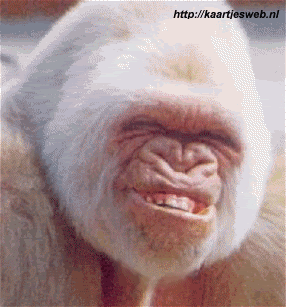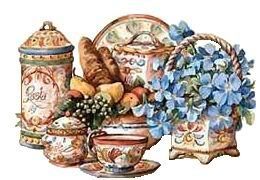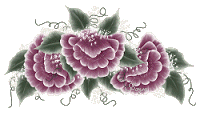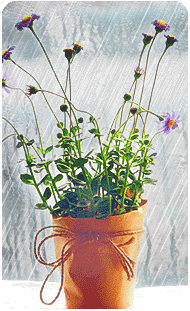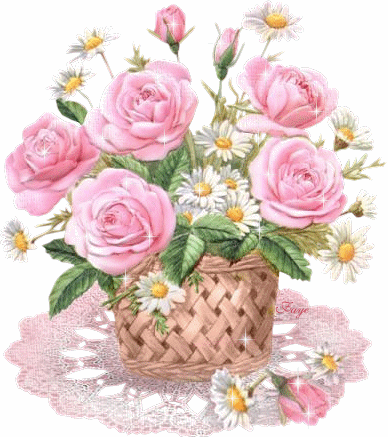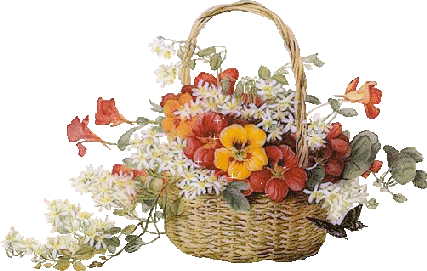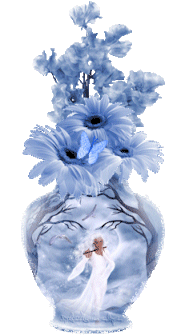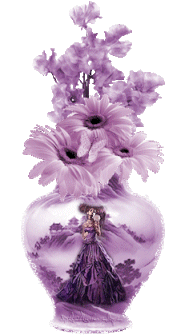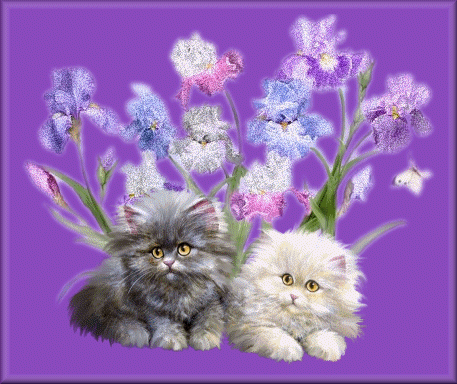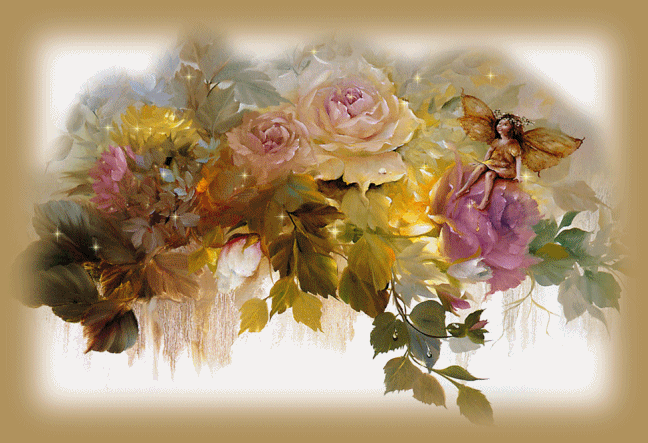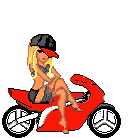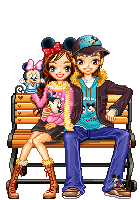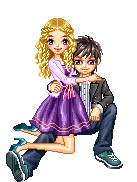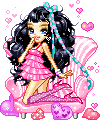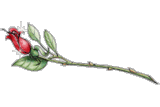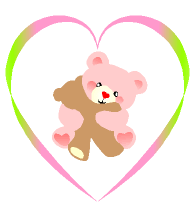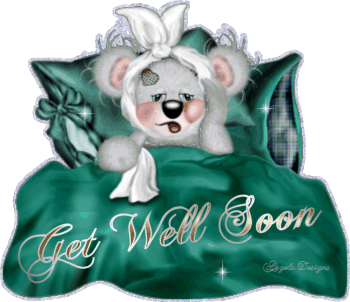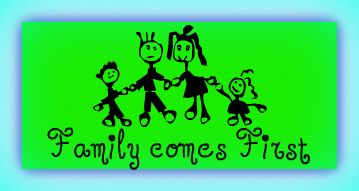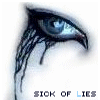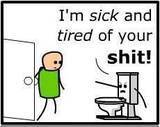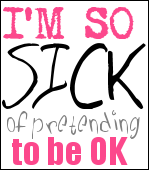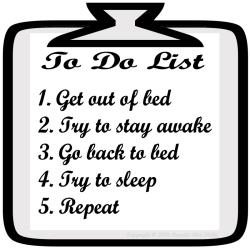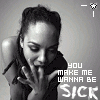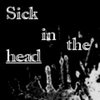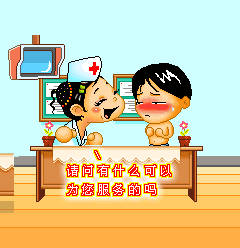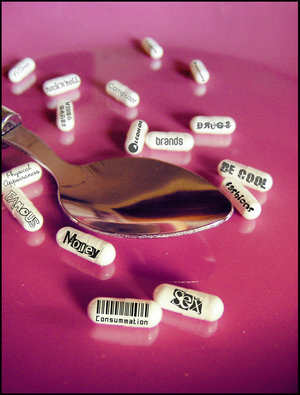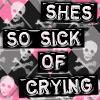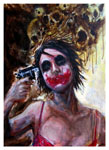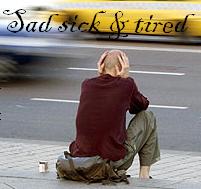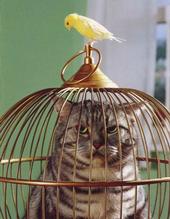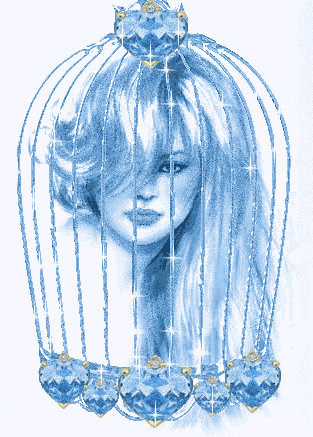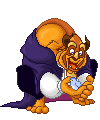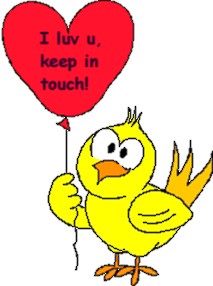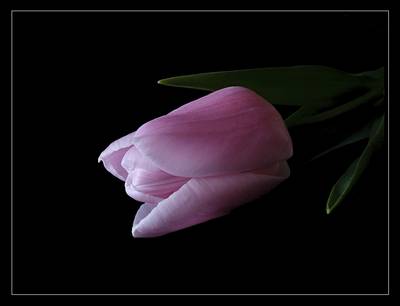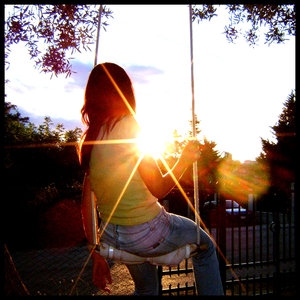MY LIST FOR MEDICAL STUDY

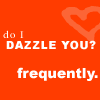


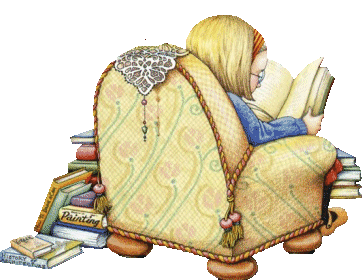

LIST OF REFERENCES FOR MEDICAL EDUCATION
Wednesday, January 28, 2009
Alternative Medication and TCM.西医-中医-治疗历史
替代医学的发展(development of alternative medicine)
目前各国都十分重视替代医学在医学领域中的地位,许多大学医学院都设立替代医学研究中心。而针灸和中医在西方医学被归入替代医学范畴,并占有较重要的地位,一项最新的研究表明,针灸在替代医学疗法中占第二位(23%),仅次于冥想疗法(34%),而草药疗法占12%,居第5位。
替代医学(alternative medicine),也叫替代疗法
是由西方国家划定的常规西医治疗以外的补充疗法。按照西方的习惯,替代医学包括了冥想疗法、催眠疗法、顺势疗法、按摩疗法、香味疗法、维生素疗法等,传统的草药和针灸也归在其中。
20世纪70年代后,一种重新起用古医学的“自然疗法”在西方悄然兴起,后又发展迅速,但由于大半个世纪的告别,老医生早就死绝,大多数疗法也失传。西方人开始把眼光瞄向了传统医学保持比较好的国家和民族,尤其是中国的中医中药。以至于近年来,到中国学习自然科学的外国留学生中,学习中医药的留学生数量一直占据首位。据不完全统计,从1987年到2005年,中国为130多个国家和地区培养了54700余名中医药人才。世界卫生组织在中国建立3个国际针灸培训中心,培训了36000余名中医药专业技术人才。
替代医学在西方国家的发展在西方发达国家中,“替代医学”一向不被重视,被归为“另类”。但这些治疗方法却越来越受到群众欢迎。据美国有关人士调查,美国有60%以上的成年人试用过“替代医学”。但据另一项调查,美国用过“替代医学”的只占美国成人的16%。无论如何,现实驱使美国卫生部高度重视这一问题。美国国立卫生院的属下设立了一个非主流医学办公室,后转为辅助和“替代医学”研究中心,近5年的研究预算以每年50%~100%的速度增长,2001年预算将达1亿美元,并在全国设立了16个研究中心,分别从事有关“替代医学”的专项研究。1997年11月,美国国立卫生院亲自出面召开了关于针灸的听证会,邀请中国的韩济生院士等三位学者参加,韩院士应邀在该次大会上作“针刺镇痛原理”的大会报告。会议对针灸治疗疼痛和恶心呕吐等的疗效加以充分肯定,并指出要加强对针灸原理和应用的研究。美国总统克林顿于1999年亲自下令设立四人顾问委员会,对“替代医学”进行政策性研究,要求2001年6月提出一个切实可行的政策性报告,供政府和国会立法参考。美国这些举动不仅受到本国朝野的欢迎,也受到西方其他国家的关注。 英国对“替代医学”的态度一向是听其自然,任何人只要说“我是针灸医师”就可以开业扎针,每次收费大约25英镑,其他如按摩、骨伤整治等也如此。实际上是缺乏管理。但由于政府提供的免费医疗服务差,候诊时间太长,所以人们习惯于自费求医。据统计,全国“替代医学”年消费总数达16亿英镑。查尔斯王子本人比较重视非主流医疗的作用,他早在1982年就提倡关注“替代医学”。他认为,英国应该学习美国,有一个类似于辅助和“替代医学”研究中心的机构,有足够的经费来支持这一重要活动;他特别提倡主流医学与“替代医学”要互相主动配合,共同为病人服务。 从1997年美国国立卫生院主持召开针灸法听证会,到1999年在以色列耶路撒冷市召开第五届国际脑科学大会首次设立“针灸”专题报告会,以及同年美国总统克林顿指定19人组成“替代医学”委员会,至2001年由英国查尔斯王子发起在伦敦召开“整合医学”会议,这一发展过程可以看出,中医药、针灸等“替代医学”正日益受到西方世界的重视,正在逐渐走向与目前的西方主流医学相汇合,而形成统一的“整合医学”的潮流。
医
近代西方医学发展概述
所谓西医,实际上是一种错误的说法,我们一般所说的西医,实际上是指近代和现代医学,在过去的中国被称为新医,与旧医(中医)相对立.
文艺复兴以后,西方医学开始了由经验医学向实验医学的转变。1543年,维萨里发表《人体构造论》,建立了人体解剖学。这既表明一门古老的学科在新的水平上复活,又标志着医学新征途的开始。
17世纪实验、量度的应用,使生命科学开始步入科学轨道,其标志是哈维发现血液循环。随着实验的兴起,出现了许多科学仪器,显微镜就是其中之一,显微镜把人们带到一个新的认识水平。18世纪莫干尼把对疾病的认识由症状推到了器官,建立了病理解剖学,为研究疾病的生物学原因开辟了道路,此外,牛痘接种的发明,公共卫生和社会医学的一些问题引起人们的重视。
到了19世纪中叶,德国病理学家微尔啸(Virchow)倡导细胞病理学,将疾病的原因解释为细胞形式和构造的改变。细胞病理学确认了疾病的微细物质基础,充实和发展了形态病理学,开辟了病理学的新阶段。19世纪下半叶巴斯德证明发酵及传染病都是微生物引起的,德国人科赫(Koch R.)发现霍乱弧菌、结核杆菌及炭疽杆菌等,并改进了培养细菌的方法和细菌染色方法,大多数主要致病菌在此时期内先后发现。巴斯德还用减弱微生物毒力的方法首先进行疫苗的研究,从而创立经典免疫学,以后,在巴斯德研究所工作的俄国人梅契尼科夫(Mechnikovl I.)系统阐述了吞筮现象及某些传染病的免疫现象。
在临床医学上,19世纪诊断学有了很大的进步,叩诊法在临床上推广应用;雷奈克(Laennec R.)发明听诊器;许多临床诊断辅助手段,如血压测量、体温测量、体腔镜检查都是在19世纪开始应用的。19世纪中叶以后,解剖学的发展和麻醉法、防腐法和无菌法的应用,对外科学的发展,起了决定性的作用,从此外科学开始迅速发展。19世纪末期,体腔外科普遍发达,这样许多临床专业(如妇科、泌尿科、眼科等)中除进行内科处置外,外科方法也获得重要地位。药物学方面,19世纪初期,一些植物药的有效成分先后被提取出来。到19世纪末合成阿斯匹林,其后各种药物的合成精制不断得到发展。
19世纪,预防医学和保障健康的医学对策已逐渐成为立法和行政的问题。劳动卫生学、营养和食品卫生学、学校卫生学相继产生。19世纪末叶和20世纪初,卫生学中又划分出社会卫生学,它的目的是研究人民的健康情况,患病率和死亡率的原因以及与它们斗争的方法。此外,英国南丁格尔(Nightingale F.)1860年创立护士学校,传播其护理学思想,提高护理地位,使护理学成为一门科学。
西方医学的再次传入
明末清初,来华的传教士把基督教带到中国的同时,也带来了西方近代科学和医药学。由于当时主要传人的只是浅显的解剖生理知识,而且西医在临床治疗技术上并不优于中医,故影响不大。西医开始对中国医学发生影响是在19世纪初,牛痘接种法以及西医外科和眼科治疗技术的传入,随着西医传入的扩大,近代西医学的成就相继引入中国,从而为西医在中国的发展奠定了基础。
鸦片战争改变了中国原有的历史进程和社会性质。鸦片战争后,教会医院由沿海进入整个内地,几十年间教会医院在各地比比皆是,成为和教堂一样引人注目的教会标志。
广州是近代中国最早与西方世界接触的前沿,也是西方医学最早输入和最先繁荣的城市。早在1835年广州就有了传教士建立的第一所眼科医院,1838年“中国医学传教协会”在广州组成。鸦片战争后,1842年11月伯驾从美国回到广州于旧址重开医院,在1845年以前,教会医院的外科切割手术都是在无麻醉下进行。1846年伯驾引入乙醚麻醉法在他的医院第一次试用,使医院在实施外科手术上有重大进步。同年10月,伯驾又从波士顿买到杰克逊(Jackson CT.)医师研制的麻醉仪和一批乙醚,随同附来的一封信介绍有使用这种仪器和药物的方法。这种仪器的安全性显然更好。时隔两年伯驾很快又引进氯仿麻药,1849年11月24日,他首次对一例膀胱结石病人用氯仿麻醉,结果十分成功。麻醉药引入教会医院,使教会医生外科手术的选择范围大大扩展。以伯驾为代表的教会医生在引进麻醉剂方面是迅速的。1846年美国医生摩顿(Morton WTG.)首先使用乙醚拔牙。在英国1846年12月,伦敦外科医生也开始应用乙醚于外科手术,1847年11月15日辛普森医生在爱丁堡皇家医院首先用氯仿于外科手术。这两种麻醉药为西医外科发生根本性变化起到了重要作用。由于教会医生和他们本国教会组织保持着密切联系,使他们能即时地输入一些新技术,为教会医院在中国的发展保持技术优势。1842年后广州教会医院的治疗范围逐渐扩大,眼病虽然是医院的治疗重点,但是疾病的种类已涉及到内外科、骨科、皮科和牙科方面,手术包括肿瘤、膀胱结石、乳腺疾病、坏死性骨骼切除等。
广州眼科医局是当时规模最大、影响也最大的教会医院,除此之外还有几个小诊所。例如,1848年美国公理会鲍尔(Ball D.)医生在城内公理会教堂里开有一个诊所,1851年美国长老会医生哈珀(Happer AP.)在广州开办惠济诊所。
五个口岸的教会医院的根本宗旨当然是为了传教,但同时它还发挥着另外一个作用,即给口岸上的外国商人、侨民和驻军服务。譬如宁波舟山教会诊所为驻扎舟山的英军提供大量药品。上海伦敦会医院开创之初的主要经费都是向上海的英国侨民募捐的。
英国传教士洛克哈特开创了在上海建立教会医院的历史。他看到了上海作为华东沿海一个商业中心的重要性,于是停止舟山诊所工作转到上海。洛克哈特在1845年的医院报告中说,他的医院一年时间治疗的病人达一万余人次,不仅有上海的居民,还有苏州、松江等附近城镇的患者。鉴于这种有利的形势,1846年起他又计划建立更大的医院和购买更多的设备。1849年上海医院开始用氯仿进行外科手术。
在上海从事医药事业的教会仍然是英美的基督教差会和法国天主教会。1847年美国浸信会曾派遣詹姆斯(James JS.)来上海开诊所。1848年美国美以美会传教士泰勒(Taylor G.)到上海办诊所持续了5年,1854年由凯利医生接替直到1856年。美国圣公会的菲什(Fish MW.)医师1856年到上海,在城里圣公会教堂附近设有一个诊所直到1858年。法国天主教会于1849年在上海建天主教堂,教堂里兼开诊所,神父勒麦特里(lemaitre)和法国两名外科医生法勒(Fallier)和休巴克(Hubac)在这个天主教诊所负责医务工作,诊所维持到1867年。
宁波、厦门、福州三个同时新辟的口岸,传教士当然不会放弃。这三个口岸医药传教的情形与上海、广州没有根本区别,不过规模较小。1843年11月浸礼会的麦高恩(Macgowan DJ.)就在宁波城内商业区利用一个中国商人提供的房屋办起诊所,主要收治眼病患者。次年,美国长老会的麦卡特夫妇(McCartee DB.)到宁波传教,在住宅里看病,他们在这里收养中国女孩金韵梅并给予教育,然后送到美国纽约学习医学,学成回国后一直为教会作医疗工作,是中国第一个在国外留学医科的女医生。1841年厦门被英军占领。1842年6月,英国传教士卡明(Cumming WH.)医生在靠近厦门的鼓浪屿开办诊所,1843年11月,美国长老会赫伯恩(Hepburn JC.)也来到鼓浪屿在卡明的诊所工作。但是,根据教会的指示,他们很快从鼓浪屿转到厦门市区内。1848年伦敦会医生希斯洛普(Hyslop J.)到厦门开始医药传教工作。1850年美国长老会扬(Young JH.)医生到厦门开办诊所。1853年赫希伯尔格(Hirschberg HJ.)从香港来到厦门接替扬,直到1858年。福州教会更晚,1848年秋季,美以美会怀特(White MC.)首先到福州开诊所,1851年威尔纳(Wiley)来继续这里的工作直到1854年回国。1850年英国圣公会的韦尔顿到福州,在一个佛教庙宇办诊所到1856年。
1842年后香港变成英国殖民地香港有大量英国驻军和外国商人,当内地发生战争时大部分传教士和侨民便选择香港作暂栖地,这个狭小的港岛成为出入中国的重要门户。港岛因此变得拥挤,加之气候炎热和潮湿,经常流行疟疾、痢疾和黄疸病。病人不仅有原岛上的中国居民,还有英军士兵。英军舰船上的军医院无法适应病人大量增加的治疗需要,军医院从船上搬到岛上。1843年军医院全部迁入港岛上一幢新建的楼房里,同年,香港成立公共卫生和清洁委员会,1844年3月,香港颁布“维持香港殖民地秩序和清洁”的公告,1845年香港成立“中国内外科学会”,由英国海军医生塔克(Tocker A.)任会长,合信(Hobsen B.)任秘书,成员共7人。学会下面设一所图书馆,他们和内地教会医生有密切的关系,定期召开医学讨论会,与内地医生共同研究中国常见的流行病和中国植物药物等问题。由塔克代表该医学会提议在香港建立一所教会医院和医学校,教会医院计划很快得到实现,但关于香港医学校的计划后来因为经费来源出现了困难和香港内外科医学会的悄灰解体没有得到实施。
在学会直接组织下,1843年6月,香港第一个教会医院落成。医院的主要工作除门诊部外还有可以容纳40多人的病房。实际医疗工作是合信和另一个医生承担,同时经常有一些在港的外国医生帮助,1848年初,伦敦会派赫希伯格来香港负责医院工作,并于1848年3月20日在中国九龙增加一个诊所。赫希伯格在香港工作到1853年后转到厦门。合信培养的两名中国青年参与眼科病的治疗和手术工作。合信对医学教育抱有浓厚的兴趣,1844年他向香港内外科学会建议尽快发展香港医学教育。他认为,可以首先组成一个6到10人的医学班,前期讲授物理、化学、生物学等课程,然后在医院实习临床科目和解剖示范。医学会虽然批准了他的计划,但在三年后,1847年当合信再次从英国回到香港时,他带来的在国内筹集的经费远远不够用于建立一个学校,加之香港医学会的解散,合信设想建立香港医学校的愿望最终没有实现。(后来香港出现的医学校与合信无关)但是,1850年,合信却在广州发表出版中文书籍《全体新论》,合信希望这本医学著作成为向中国人讲授西方医学有益的教材。《全体新论》有过几次再版重印,一度成为为数不多的几本中文标准医学著作。
西医的诊断与治疗
一、西医的诊断
1、 问诊 用交谈的方式,通过病人或知情人的叙述,了解病人的情况,作出初步诊断。
2、 体格检查 医生利用自己的感觉器官通过视诊、触诊、叩诊、听诊、嗅诊等方法或借助听诊器、叩诊锤、血压计、体温表等简单的工具对病人进行全面、系统的检查来诊断患者的疾病。
3、 实验室检查 对患者的血液、体液、分泌物、排泄物、细胞取样和组织标本等进行检查来诊断患者的疾病。
4、 心电图检查 通过心电图仪的记录来检查患者心脏的疾病。
5、 医学影像学的检查 利用X线对各组织器官的穿透能力,使人体内部结构在荧光屏上或X片上显出阴影进行观察,从而了解疾病等情况的诊断方法。有些病变的部位和性质如显示不清,应用计算机体层摄影技术(CT)和磁共振(MRI)检查,就能作出更精确的诊断。
总之,西医的诊断更多的是借助先进的医疗仪器设备和实验室做出对疾病准确的诊断。
二、西医的治疗
西医对疾病的治疗主要有西药治疗、手术治疗,激光治疗和化疗等。
西医的脉诊和舌诊
一、西医的脉诊
西医的脉诊属于西医触诊范围。西医触诊脉搏时通常选择两侧桡动脉,有时也检查颞动脉、颈动脉、肱动脉股动脉或足背动脉。常见的异常脉搏有:
水冲脉:又称陷落脉,检查时紧握病人的手腕掌面并将其手臂逐渐伸直抬高过头,感到脉搏骤起骤落,急促而有力,犹如潮水涨落,此是脉压差增大所致。常见于主动脉瓣关闭不全、动脉导管未闭、严重贫血、甲状腺功能亢进等。
交替脉:指脉搏节律正常而现强弱交替变化的现象。是心肌损害的表现,由于左心室收缩力强弱交替所致,为左心衰竭、心肌严重损害的重要体征之一,见于高血压心脏病、急性心肌梗死和主动脉瓣关闭不全等。
奇脉:又称吸停脉,是指平静吸气时脉搏明显减弱甚至消失的现象。常见于是心包积液和缩窄性心肌炎。
无脉:即脉搏消失,见于严重休克及多发性大动脉炎等。
脉短绌:指脉率少于心律者为脉短绌,常见于心脏期前收缩、心房颤动。
二、西医的舌诊
西医的舌诊属于西医视诊范围。西医舌诊主要通过观察病人舌的表现来诊断一些疾病。
正常人的舌质呈粉红色,大小厚薄适中,舌体柔软,活动自如,舌面湿润并覆盖着一层薄白苔。若病人伸出舌头时,不自主地偏斜,常见于舌下神经麻痹;若舌体震颤,常见于甲状腺功能亢进症。若舌面干燥严重者见于严重脱水。舌体增大,见于舌炎、血管神经性水肿;若长期增大,应考虑黏液性水肿、先天愚型和舌肿瘤。舌质淡红;应考虑贫血或营养不良。舌质深红;应考虑急性感染性疾病。舌质紫红,应考虑心、肺功能不全。
常见舌体异常有:
草莓舌:舌乳头肿胀,舌尖出现一些红点红点,向舌两边扩散,鲜红如同草莓,主要见于猩红热、链球菌感染、葡萄球菌败血症,长期发热引起。也由维生素或锌的缺乏易所致。
牛肉舌:表现为舌头肿胀、疼痛、舌面绛红如生牛肉,对热、咸、酸的食物特别敏感,经常出现舌部溃疡、牙周炎、唇炎,这是烟酸缺乏的典型症状,也见于恶性贫血患者。
镜面舌:又称光滑舌,舌体小,舌乳头萎缩,舌面光滑无苔,呈粉红色或红色。常见于缺铁性贫血、恶性贫血及慢性萎缩性胃炎患等。
地图舌:又称为游走性舌炎、剥脱性舌炎,为丝状乳头剥脱形成的不规则的红色光滑稍凹陷区,周边为增厚的白色或黄色边缘,形似地图,少数患者有轻度烧灼及痒感。常见消化不良、肠道寄生虫、维生素B族缺乏、贫血、胃肠功能紊乱;也与精神情绪不稳定,过度劳累、病灶感染有关。
黑毛舌:又称黑舌,指舌质发黑,而且上面覆有黑色或黑褐色的毛。是由丝状乳头缠绕了霉菌丝,上皮细胞角化伸长所致。见于久病体弱或长期使用广谱抗生素的病人。也常见于吸烟、酗酒、不注意口腔卫生者。
裂纹舌:又名沟纹舌,舌面出现纵向裂纹,.常见于维生素B族缺乏的病人,也与消化系统不良有关。
舌苔也有一定诊断意义:
厚白苔:常见于感冒、急性炎症或感染性疾病的初期。
舌苔黄色:常见于严重感染(如流脑、乙脑、伤寒、白喉、肺炎、腹膜炎等)、高热、脱水、黄疸、大量吸烟等。
舌苔发黑:常见于高热、严重脱水的病人。
西医综合
西医综合是研究生入学考试(西医)的一门必考科目,难度系数是所有考研科目中最小的,在2007年以前,满分是150分,而全国的平均分是71.3分,2007年以后,满分改为300分,2007年的全国西医综合平均分是123.6分,难度系数是所有学科门类的研究生考试中最小的一科。
替代医学(alternative medicine),也叫替代疗法
是由西方国家划定的常规西医治疗以外的补充疗法。按照西方的习惯,替代医学包括了冥想疗法、催眠疗法、顺势疗法、按摩疗法、香味疗法、维生素疗法等,传统的草药和针灸也归在其中。
20世纪70年代后,一种重新起用古医学的“自然疗法”在西方悄然兴起,后又发展迅速,但由于大半个世纪的告别,老医生早就死绝,大多数疗法也失传。西方人开始把眼光瞄向了传统医学保持比较好的国家和民族,尤其是中国的中医中药。以至于近年来,到中国学习自然科学的外国留学生中,学习中医药的留学生数量一直占据首位。据不完全统计,从1987年到2005年,中国为130多个国家和地区培养了54700余名中医药人才。世界卫生组织在中国建立3个国际针灸培训中心,培训了36000余名中医药专业技术人才。
替代医学在西方国家的发展在西方发达国家中,“替代医学”一向不被重视,被归为“另类”。但这些治疗方法却越来越受到群众欢迎。据美国有关人士调查,美国有60%以上的成年人试用过“替代医学”。但据另一项调查,美国用过“替代医学”的只占美国成人的16%。无论如何,现实驱使美国卫生部高度重视这一问题。美国国立卫生院的属下设立了一个非主流医学办公室,后转为辅助和“替代医学”研究中心,近5年的研究预算以每年50%~100%的速度增长,2001年预算将达1亿美元,并在全国设立了16个研究中心,分别从事有关“替代医学”的专项研究。1997年11月,美国国立卫生院亲自出面召开了关于针灸的听证会,邀请中国的韩济生院士等三位学者参加,韩院士应邀在该次大会上作“针刺镇痛原理”的大会报告。会议对针灸治疗疼痛和恶心呕吐等的疗效加以充分肯定,并指出要加强对针灸原理和应用的研究。美国总统克林顿于1999年亲自下令设立四人顾问委员会,对“替代医学”进行政策性研究,要求2001年6月提出一个切实可行的政策性报告,供政府和国会立法参考。美国这些举动不仅受到本国朝野的欢迎,也受到西方其他国家的关注。 英国对“替代医学”的态度一向是听其自然,任何人只要说“我是针灸医师”就可以开业扎针,每次收费大约25英镑,其他如按摩、骨伤整治等也如此。实际上是缺乏管理。但由于政府提供的免费医疗服务差,候诊时间太长,所以人们习惯于自费求医。据统计,全国“替代医学”年消费总数达16亿英镑。查尔斯王子本人比较重视非主流医疗的作用,他早在1982年就提倡关注“替代医学”。他认为,英国应该学习美国,有一个类似于辅助和“替代医学”研究中心的机构,有足够的经费来支持这一重要活动;他特别提倡主流医学与“替代医学”要互相主动配合,共同为病人服务。 从1997年美国国立卫生院主持召开针灸法听证会,到1999年在以色列耶路撒冷市召开第五届国际脑科学大会首次设立“针灸”专题报告会,以及同年美国总统克林顿指定19人组成“替代医学”委员会,至2001年由英国查尔斯王子发起在伦敦召开“整合医学”会议,这一发展过程可以看出,中医药、针灸等“替代医学”正日益受到西方世界的重视,正在逐渐走向与目前的西方主流医学相汇合,而形成统一的“整合医学”的潮流。
舌苔辩病法 TCM
舌苔主要是舌頭的絲狀乳頭,因其上扁平細胞有角化,外觀呈乳白色,故一般正常舌頭均具微薄白苔。
如果絲狀乳頭增殖而且角質增多時,乳白色增多,即為「白苔」;如果絲狀乳頭增殖且過度角化及少脫落,顏色偏黃,即為「黃苔」。
中醫認為身體有了疾病,都會在舌苔上表現出來,一般「舌苔白」表示疾病較輕,或疾病在表層淺處,如感冒。
「舌苔黃」則表示疾病屬熱性,或病邪已入身體裡處,如肺炎、熱性胃炎;「舌苔黑」指疾病已延續相當時間。
舌苔除顏色分辨外,「舌苔薄」顯示疾病剛開始,「舌苔厚」顯示病情日增。一般說來,舌苔由黃轉白,由厚轉薄,是指疾病在好轉。
另外,舌苔還要辨別是否具根蒂性。所謂「有根蒂性」,是指舌苔不易刮除,即便刮除後,舌面還是粗糙有如漿糊一層,這就是表示人體的元氣尚充足,足夠聯繫舌苔和舌體。
至於「無根蒂性」,就是舌苔很容易刮除,而見光滑潔淨的舌苔的舌體表面,這就表示人的元氣已有衰竭,無法有力的聯繫舌苔和舌體兩方。這種舌苔的根蒂性,是在判定體內元氣的充足或衰竭。
其他如苔呈乾、燥是屬熱多,苔呈滑、潤是屬寒、濕、痰多,則是除顏色外亦應列入的考慮因素。
同時,絲狀乳頭晚上持續生長,早上一般舌苔較厚,吃流質飲食,因食品和舌苔減少摩擦,舌苔會較厚。
喝牛奶後舌苔白;吃花生、瓜子因脂肪而使舌苔呈黃白色;大量長期服用抗生素,或類固醇(美國仙丹),舌苔易變厚且呈黑褐色,在舌診上都該注意到。
定义
舌苔是正常人的舌背上有一层薄白而润的苔状物,叫舌苔。由脱落的角化上皮。唾液、细菌、食物碎屑及渗出的白血细胞等组成。在正常情况下,由于咀嚼和吞咽动作,以及唾液、饮食的冲洗,经常不断地清除掉舌表面的物质,仅表现为薄白的一层舌苔。当患病时,进食少或只进软食,使咀嚼和舌的动作减少,或唾液分泌减少,舌苔就变厚。正常人的舌苔,一般是薄而均匀地平铺在舌面,在舌面中部、根部稍厚。因舌苔由胃气所生,而五脏六腑皆禀气于胃,因此,舌苔的变化可反映脏腑的寒热虚实、病邪的性质和病位的深浅。舌苔的望诊包括望苔色、望苔质两部分。
苔色
即舌苔的颜色,病态的苔色主要有白苔、黄苔、灰黑苔。有时也可发生绿苔(多由白苔转化而来,常见于温疫、湿温,为湿热郁熏之征)、霉酱苔(红中发黑、又兼黄色的舌苔,常见于夹食中暑或内热久郁,主湿热病日久者)。
苔质
即舌苔的形质,分为:①苔的有无。正常舌有一层薄白苔,由胃气而生。在疾病过程中,舌苔从有到无,是胃气阴不足、正气渐衰的表现;但舌苔剥落之后,复生有薄白苔,则是邪退正生,胃气渐复的表现。②苔的厚薄。透过舌苔能隐隐见到舌质的为薄苔,不能见到舌质为厚苔。舌苔的厚薄可测定正邪盛衰和病情的深浅轻重。薄苔主外感表证,亦主内伤气郁。厚苔主痰饮、湿邪、积滞。舌苔由薄变厚,病邪自表入里,邪盛病进;舌苔由厚变薄,为病邪自里达表,正胜病退。③舌苔的润燥可了解津液的变化。若舌面润泽,干湿适中为正常舌象,虽有病而津液未伤;若扪之湿而滑利,则称滑苔,多主寒主湿,或阳虚水饮内停。若舌面望之干枯,用手扪之无津液,则为燥苔,多由热盛伤津、阴液亏耗,或气不化津所致。④舌苔的腐腻。⑤舌苔的偏全。舌苔在舌面分布的变化。舌苔布满全舌称为全。舌苔偏布于舌面的前、后、左、右某一局部,称为偏。察舌苔分布的偏全,可判断病变的所在。全苔为邪气散漫,多为湿痰阻滞中焦之征;舌苔偏见于舌的一侧,为邪在半表半里,或病在肝胆;苔中根厚腻,多为痰饮或胃肠积滞等。⑥舌苔的剥落。⑦舌苔的消长。舌苔薄厚、多少的变化,也是正邪进退的反映。舌苔由少变多、由薄复厚,一般说明邪气加重,主病进;舌苔由厚变薄、由多变少,说明正气渐复,主病退。若舌苔骤增骤退,多为病情暴变的征象。⑧舌苔的真假。辨舌苔的真假,可判断疾病的轻重和预后。舌苔真假的判断以有根无根为标准。凡舌苔紧贴舌面,不易刮去,似从舌体上长出来的,即真苔又称有根苔。若苔不着实,如浮涂在舌面,刮之即去,即假苔又称为无根苔。在疾病的初期、中期,有根苔比无根苔为深重,疾病后期有根苔比无根苔为佳。若舌面上浮一层厚苔,望似无根,而其下部生出一层新苔,属疾病趋愈的征象。在辨别假苔时需注意三个方面:第一,清晨舌苔满布,饮食后苔即退去,虽属假苔,并非无根;若退后苔少或无苔,则是里虚。第二,有苔有色,刮之即去,病轻浅;若揩之即去,病更轻浅。第三,厚苔一片而无根,其下不能续生新苔,是原有胃气,其后胃气虚乏,不能蒸化胃液上潮。多因过服寒凉药损伤阳气,或过服热药损伤阴液所致。
舌苔表现
(1)白苔:一般表示为表证、寒证。舌苔薄白而润为正常人的舌苔,同时,苔薄白亦是表示病在体表而未入里。舌苔薄白而过于润滑,多见于表寒证。苔薄白而干燥,为表热证或感受燥邪。舌苔白厚而干燥,代表湿浊化热伤津。舌苔布满白苔,摸之不干燥,称为“粉白苔”,表示得瘟疫病。苔白且干燥,称为“糙裂苔”,多见于温热病。舌淡苔白而滑润,代表寒证或寒湿证。舌苔白滑而粘腻,见于体内有痰湿或湿困于脾。舌苔白滑而腐,为胃腑蕴热。如果苔白如雪花片而质干枯者,称为“雪花苔”,表示脾冷。舌及满口生衣,出现霉苔或生糜烂点,为胃气衰败,脏气将绝之危候。
(2)黄苔:黄苔主里热证。苔薄黄厚而干燥,则里热盛,津液受损。苔黄干燥生刺,舌有裂纹,为里热极盛,津液大伤,脏腑大热。舌苔黄厚而腻,多为痰热、食积或湿热内蕴。舌苔黄滑而润,为阳虚表现。
(3)灰苔:主里证。苔灰薄而润滑,多为寒湿内阻,或痰饮内停。苔灰而干燥,为热病或阴虚火旺。
(4)黑苔:黑苔大多由黄苔或灰苔转化而成,表明了病情极其严重。苔黑而干燥,为热盛津亏。舌尖苔黑而干燥,为心火盛。苔黑而润滑,为阳虚阴寒极盛。
最后讲述望苔质的知识。望苔质即望舌苔的形状质感。主要观察苔的厚薄、润燥、腐腻、剥落、有根无根及偏全等情况。
(1)厚、薄苔:
苔质的厚薄,以见底和不见底为标准。透过苔质能见到舌体,称之薄苔,否则为厚苔。舌苔薄,病情一般较轻;舌苔厚,表明病情较为严重。在疾病发展过程中,舌苔由薄变厚,表明病邪入里,病情由轻变重;若舌苔由厚变薄,表明病邪外透,病情好转。
(2)润、燥苔:
舌苔润滑多津液,为津液未损伤,称为润苔。舌苔干燥缺少津液,称为燥苔。舌苔干燥而色黄者,为胃热炽盛,损伤津液。舌苔干燥而色黑,为热极阴伤。若舌苔干燥色黑而且有刺,则属热极津液枯竭。
(3)腐、腻苔:
苔质颗粒细小致密,中厚边薄,刮之易去者,称为腻苔。苔质颗粉较大,疏松而厚,形状似豆腐渣堆积于舌面,刮之易去者,称为腐苔。腻苔常见于湿浊、痰饮、食积、湿温等。腐苔为食积肠胃、痰浊内蕴及溃疡之证。舌苔白腻,多为湿痰,或胃阳虚。舌苔黄腻,多为痰热,食滞化热。舌苔厚腐,多为饮食停积胃肠。舌苔布满白衣,称为口糜,表明胃气衰败。
(4)剥落苔:
舌上原本有苔,若局部或全部消失者,称为剥落苔。如果苔全部脱落,表明胃阴枯竭,大伤胃气。若舌苔剥落不全,剥落处光滑无苔,称为花剥苔,表明胃的气阴两伤。如果舌苔剥落处不光滑,有类似新生颗粒,称为类剥苔,表明病人血气不连续。若舌苔大部分脱落,仅留下一小块,称之鸡心舌,则为胃气阴亏损之证。另外,舌苔从有到无,为胃的气阴不足,正气渐衰;如果舌苔从无而逐渐变薄白苔,表明病情好转。
(5)有根、无根苔:
舌苔紧贴舌面,刮之不去,称为有根苔。若舌苔好似涂在舌面上,刮之易落,称之无根苔。有根苔表明病人有胃气,常见于实证、热证;无根苔表明胃气已衰,见于虚证、寒证。如果有根兼薄苔,属于正常苔,表明正气未伤;若无根苔薄或厚,刮之即去,不再生成新苔,表明正气衰败。
(6)全、偏苔:
舌苔布满整个舌,称全苔。舌苔仅布于舌的某一部分,称偏苔。全苔代表湿痰阻中之证。如果仅是舌尖部分有苔,是病邪入里却未深入,但胃气却受伤。若舌尖部分无苔,而其余地方有苔,代表肠胃有积滞或有痰饮。舌苔偏于左侧或右侧,表明病邪半表半里,亦可有肝胆湿热;舌中央无苔、舌边缘厚苔而中央薄苔,为阴虚、胃气损伤或血虚之证。
舌苔辩病法
黑苔病情辨别法
黑苔的出现往往表示病情较重,或者是抗生素过度使用,也可能是口腔卫生不良引起。可以用黄连10克煎汁涂在黑苔上,一日多次,如黑苔变短变软,颜色变淡或消失,则说明这种黑苔是口腔卫生不良所造成。否则应找出病因。
舌苔菱形剥落辨病法
在舌面中央出现一块菱形剥落区,很可能有糖尿病存在。此刻如同时存在多食善饥、口渴、消瘦等症状则更应引起重视。
草莓舌辨病法
患者出现舌面乳头增大、红肿,样子像红色的草莓即称作草莓舌。此刻如伴见高热及皮肤生出猩红色密集细小疹点等症,很可能患上了猩红热病。-----------得了这吃饭就是受罪
花剥舌苔辨病法
花剥舌苔又称地图舌苔,它表现为部分舌苔剥脱露出红色舌质。小儿出现该苔往往是体质不佳的表现,这类儿童常常有过敏体质,容易患哮喘、奶癣等过敏疾病。小儿偏食、不爱吃新鲜蔬菜者,或者营养不良、贫癣肠有寄生虫及经常感冒者也易见到剥苔。成年人见到该苔则是阴虚血亏的表现;舌前端见花剥为心阴不足;舌根部见花剥为肝肾阴虚。
舌底静脉辨病法
上卷舌尖可见两根静脉行于舌底,正常人仅隐隐显于舌下。如果其直径超过2.7毫米,其长度超过舌尖与舌系带终点连线的五分之三即为病态,有时还可同时见到舌边青紫斑或众多小血管丛。它反映全身血液或某器官血液有瘀阻现象。在血液检验上常可存在血球压积、血粘度等指标异常。
观舌苔变化可查胃病
中医看病讲究望闻问切,更是看重舌苔的改变。透过舌象的观察来了解和认识疾病的本质和发展。胃病的治疗也是,舌苔变化确实能反应一些脾胃病的规律。
胃病患者如果仔细留意自己的舌苔,常会发现一些与众不同之处:有的特别厚腻、有的发黑、有的发黄、有的剥落。一个人长期舌苔不正常,旁人也会好意提醒:去看看有没有胃病吧!事实上,舌苔变化确实能反映疾病尤其是一些脾胃病的规律。
如何观察和分析舌象:
伸舌也有学问伸舌时要自然,舌体放松,舌面平展,舌尖略向下,口尽量张大(但不要过分用力),使舌体充分暴露。如伸舌过分用力,或舌体紧张、蜷曲、都会影响舌的气血运行而引起舌色改变或舌干湿度的改变。
望舌要有顺序望舌一般先看舌尖,再看舌中、舌侧,最后看舌根部,同时看舌体(舌质)的色质和舌苔的厚薄、颜色等。
观察两个重点舌诊主要观察舌体和舌苔两个方面的变化。舌体---呈什么颜色?形状是胖是瘦?质地是荣是枯?活动是否灵活自如?舌苔---苔质是厚是薄,是润是燥?苔色是白是黄还是棕褐?
正常舌象特征正常舌象可概括为六个字:"淡红舌薄白苔",具体地说,舌色淡红鲜明,舌质滋润,舌体大小适中,柔软灵活,舌苔均匀、薄白而润。
舌象变化规律一般来说舌苔由薄变厚为病进,由厚变薄为病退。
胃病患者的常见舌象为:
薄白苔---病初起,病轻浅,胃气未伤;
舌苔由薄变厚,颜色由白渐有点黄色,舌边舌尖由淡红变红,而且舌边有齿印---病情加重,提示消化不良、胃肠积滞有宿食等;
舌苔由白变黄,舌边尖红---有热象;
舌苔由黄变棕,或者由棕变黑,而且干燥少津,舌边尖变深红---热盛,多伴大便干结;
舌苔白厚腻,舌表面有一层白黏液---痰湿;
舌苔黄厚腻,舌边尖红---痰热;
舌边尖红绛色,甚至变紫色---痰浊血淤;
舌红无苔,舌面光滑如镜---胃阴虚;舌苔光剥,舌质淡---气阴两虚。
根据以上不同的舌象表现,再结合闻、问、切等其他诊断手法,中医就可做出综合分析,进行个体化的辨证施治。
可以自己调养的异常舌象
舌苔厚、有口气一个人如果常年舌苔很厚,而且有口气,一般说明胃有点小问题。如果目前没有其他不舒服的感觉,可先从饮食起居调养入手。保持生活规律,情志舒畅愉快,吃容易消化的食物,多吃蔬菜、水果、少吃肥腻、油炸食物,最好不喝酒、不吸烟。经过一段时间的调养,异常舌苔和口气有望自愈。
舌苔发黑、黏腻如果仅见这种异常舌苔而舌边尖呈正常的淡红色,且无其他明显不适,有时属于"染色"现象。患者可能食用了某些着色食物,或服用了某些药物。比如服"丽珠得乐",即可出现黑苔,而且大便亦发黑;服用抗生素,有时亦可出现黑苔。以上情况不属病态,不必紧张。但平时胃病较重的患者观察到黑苔就要警惕,如果舌边尖呈深红色,甚至发青发紫,说明病情加重,应及时到医院就诊。
舌苔花剥有的人舌面上的舌苔出现不规则的一块块"地图样"改变,有的地方有薄苔,有的地方光滑无苔,这叫"地图舌"。此类舌象者如无任何不适感觉,多属生理性改变,不需治疗。如果长期有胃病或其他慢性病,以前从未见这样的舌象,出现"地图舌"则多属阴虚表现,在治疗原发病的同时,可喝西洋参茶(每天9 克,沸水冲泡,频饮)促进自愈。
舌头有裂纹还有的人舌面上出现许多"裂纹",多数无舌苔,称"裂纹舌",如无不适感,亦属生理性的,不需治疗,如在重病后出现裂纹舌,舌红无苔,且有不适感,亦属阴虚,需配合药物治疗。
舌边有齿印有的人身躯肥大,舌体也胖大,舌边有齿印,舌苔薄白,如无明显不适,则属太胖的缘故。中医理论认为"胖人多痰湿",胖人的脾胃运化功能相对不足,食物的消化吸收易出现障碍。这些人要少吃油腻不易消化的食物,多吃蔬菜、水果和清淡食物,适当运动。如果舌苔白厚腻,舌边有齿印,不欲饮食,腹胀满,便溏薄,则属痰湿过盛,在进清淡易消化食物的同时应配合药物治疗。
舌红、苔厚、便秘有的人几天不解大便,口臭、舌苔厚、舌边尖红、尿黄,此属胃火盛。胃中火热内盛,浊气上逆、熏蒸口舌,故出现口臭、舌苔发黄、热伤津液、肠道失润,故出现大便干结。此时可服用大黄、黄连、黄芩、山栀之类中药清热泻火,在饮食上需忌酒、忌食辛辣热性食物,如辣椒、羊肉等,多吃蔬菜、水果和清淡食物,多喝水。
萎缩性胃炎患者的舌象:
以下三位胃镜诊断同为"胃窦萎缩性胃炎"的患者,舌象表现完全不同,症状和中医诊断也不同,治疗原则和用药当然也各异,这就是中医辨证论治的特色所在。
舌象:舌苔薄白,舌质淡紫,舌尖瘀点
症状:上腹部隐痛反复发作,喜热怕冷,泛吐清水
诊断:脾胃虚寒
舌象:舌苔黄厚,舌根部灰黑,舌边尖暗红色
症状:上腹部疼痛,痛有定处,食后加重
诊断:胃中痰热夹瘀
舌象:舌苔薄白微黄,舌中、舌前部苔剥,舌红少津
症状:上腹部隐痛,不思饮食,口干舌燥诊断:胃阴不足
Tuesday, January 27, 2009
The Theory of Channels and Collaterals
The Formation and Functions of Channels and Collaterals
1. Channels and Collaterals System The system of channels and collaterals constitutes the twelve regular channels, the eight extra channels, the fifteen collaterals, the twelve divergent channels, the musculo-tendinous and cutaneous regions of the twelve regular channels.
2. Channels and Collaterals Functions (1) Physiologically, the channels and collaterals are considered to be a series of connecting passages through which qi and blood circulate to regulate the functions of the zang-fu organs, tissues, and sense organs. These passages also conduct the sensations and reactions (deqi) of acupuncture treatment.
The five zang and six fu organs, four limbs, nine orifices, skin muscles, vessels, and tendons, although having their respective physiological functions, also maintain the harmonization and uniqueness of interior, exterior, upper, and lower parts of the body as a united and organic entity. This interconnection and organic combination relies upon the function of the channels and collaterals system.
All the tissues and organs of the human body need the nourishment of qi and blood in order to keep their normal physiological activities. The distribution and circulation of qi and blood throughout the body to nourish the zang-fu, tissues, and organs and to resist exogenous pathological factors depends on the transportation and conduction of the channels and collaterals. As the Lingshu records:
The channels and collaterals are the passages through which blood and qi flow to nourish yin and yang, to moisten tendons and bones, and to lubricate the joints.
(2) Pathologically, channels and collaterals are the pathways through which the exogenous pathological factors are transmitted and their channels reflected. In the Suwen it is noted:
When pathogenic factors invade the skin and the pores are open they enter the collaterals. When the collaterals become full, the pathogenic factors will move into the channels. When the channels are full, the pathogenic factors transmit to and reside in the zang and fu organs.
The interior and exterior, upper and lower parts of the body form an integrated entity through the connecting network of channels and collaterals. So under pathological conditions every part of the body will affect the rest via the channels and collaterals. The channels and collaterals are not only the passages of disease transmission, but can also reflect pathological changes. Namely, the diseases of the zang-fu organs can be reflected on the body surface, especially in certain areas or at certain points, through the transmission of channels and collaterals.
(3) In diagnosis, channels and collaterals have certain running courses that connect with the zang-fu organs. They also reflect pathological changes on the body surface. Therefore clinical diagnosis can be made according to symptoms that are related to those courses and their respective zang-fu organs.
(4) In treatment, the theory of channels and collaterals is extensively used in clinical treatment for different branches of traditional Chinese medicine. Treatments using traditional medicinal herbs are based on their main actions vis-a-vis related zang-fu organs and channels. In the practice of acupuncture, the theory of channels and collaterals is the basis of all treatment and clinical practice. Point selection and prescription combinations are all made on this basis. By stimulating a certain point or area on the body surface the physiological functions of the channels and collaterals are aroused. This action is achieved by propagating sensation through the channels. Without this sensation it is hard to achieve a therapeutic effect.
The Meridians have been classified into a division of two groups according to Yin and Yang, hand and foot, and as coupled pairs. We are going to classify the Meridians according to the traditional Chinese idea of the cycle of Qi within the Meridians. The Chinese determined that the energy flows from one meridian to the next in a continuous and fixed order. It flows from meridian to meridian in a two-hour cycle, making the complete circuit once a day.
This cycle is known as the Horary cycle. As the Qi makes its way through the meridians, each meridian in turn, with its associated organ, has a two-hour period during which it is at maximum energy. The Horary Effect is recognizable by measurable increases of Qi within an organ system and meridian during its time of maximum energy. (Qi is, of course, present within every organ system all the time; its level simply fluctuates according to the Horary Cycle.)
If a person moves from one time zone to another, the resultant "jet lag" is a result of the biological Horary clock adjusting to the new time frame. Moving East or West causes this phenomena, but moving due North or South has no effect on the internal clock.
Just as each organ system has a waxing and waning two hour period of maximum energy on the Horary Cycle, there is also the minimum energy effect of the organ on the opposite, side of the cycle, 12 hours apart. An example of this is that while the Lungs have maximum energy from 3-5 AM, the Bladder on the opposite side of the table is at its minimum energy level, 3-5 PM. Qi begins entering the Lungs at 3 AM, and has reached its maximum concentration in the organ at 4 AM. By 5 AM it has done its tonification and repair work and is moving into the Large Intestine channel.
Knowledge of this cycle and its energetic effects is necessary for highly effective acupuncture treatments, as the various organs respond either very well or very little to acupuncture depending on their energetic state at the time of treatment. The Horary Cycle is an excellent diagnostic tool and will be dealt with on the diagnostic level later in this course work.
The flow of energy begins with the Meridian of the Lungs and completes its cycle with the Liver, to commence again at the Lungs, continuing the daily cycle throughout an individual's life span. The reason that the Chinese say that the flow begins with the Lungs, is that they consider the first independent function of a child at birth to be its first breath.
Circulation of Energy Through the Primary Meridians
The Classical Order of Meridians
Arm Yang Ming Large Intestine Meridian(5am - 7am )
Leg Yang Ming Stomach Meridian (7am-9am)
Leg Tai Yin Spleen Meridian(9am-11am)
Arm Shao Yin Heart Meridian(11am-1pm)
Arm Tai Yang Small Intestine Meridian(1pm-3pm)
Leg Tai Yang Bladder Meridian(3pm-5pm)
Leg Shao Yin Kidney Meridian(5pm-7pm)
Arm Jue Yin Pericardium Meridian(7pm-9pm)
Arm Shao Yang Triple Burner Meridian(9pm-11pm)
Leg Shao Yang Gall Bladder Meridian(11pm-1am)
Leg Jue Yin Liver Meridian(1am-3am)
As shown in the above chart, qi is more prevalent in different meridians at different times. For example, from 3am to 5am, meridian qi mainly flows through the Lung Meridian and enters the Large Intestine Meridian at 5am-7am, and then the Stomach Meridian from 7am-9am. In this way, the meridian cycle is continuous as the qi flows through the body. Exterior-Interior relationship in the meridian Meridians are classified into yin meridians and yang meridians according to the yin or yang organs with which they are connected. TCM believes the interior belongs to yin and the exterior belongs to yang. Hence, yin organs are thought to have more internal functions and are called interior organs. The yang organs, on the other hand, are believed to have more external functions and are considered exterior organs. TCM analyzes the physiological function of the body based on the harmonious relationships between yin and yang organs. From these relationships, the interior and exterior relationship theory was developed.
Related Subjects :
Diagnosis Methods in TCM
Diagnostic methods in traditional Chinese medicine include four basic methods: inspection, auscultation and olfaction, inquiry and palpation. The case history, symptoms, and signs gained through those four diagnostic methods are analyzed and generalized to find the causes, nature, and interrelations of the disease, and to provide evidence for the further differentiation of syndromes. The four diagnostic methods are therefore indispensable and important steps in the differentiation and treatment of syndromes.
More about Inspection and Auscultation and Olfaction.
Therapeutic Principles Therapeutic principles are the basis for guiding clinical practice. They include biao (branch) and ben (root), that is, the principle of treating a disease by analyzing both its root cause and symptoms. Thus, factors such as climatic and seasonal conditions, geographic localities, and the patient's personal conditions must be considered in treatment, along with strengthening the zheng qi (the patient's body resistance or anti-pathogenic factors) and dispelling the xie qi (pathogenic factors).
1. The Principle of Biao and Ben Biao and ben are contrasting concepts used to indicate the primary and secondary relationships of contradictory sides in various kinds of diseases and syndromes. For example, body resistance (or anti-pathogenic factors) are considered ben (root) while pathogenic factors are biao (branch); etiology is ben, symptoms is biao; primary disease in ben, secondary disease is biao; pathological changes of internal organs are ben, body surface is biao, etc.
The principle of biao and ben is used in traditional Chinese medicine to treat the symptoms at the acute stage and to treat the root of disease at the chronic stage. If biao and ben have the same severity, treatment should then be applies to both ben (root cause) and biao (symptoms).
2. Strengthening the Zheng Qi and Dispelling Xie Qi. Zheng qi is the ability of body resistance against disease. Xie qi are the pathogenic factors. Strengthening the zheng qi and dispelling xie qi are two differing therapeutic principles. Generally, strengthening the zheng qi is used where body resistance is weak and pathogenic factors are not strong; dispelling xie qi is applied to cases which have excessive pathogenic factors, and also an unweakened body resistance. First, strengthening zheng qi and then dispelling xie qi is used in cases where the zheng qi and xie qi are not weakened. The simultaneous strengthening of zheng qi and dispelling of xie qi is applied in cases of weak body resistance where pathogenic factors are in excess. When this principle is employed, one must differentiate between what is primary and what is secondary. In strengthening zheng qi, allow for unforeseen pathogenic factors, and when dispelling pathogenic factors, do not influence the body resistance. It is necessary to make the principles of "strengthening body resistance" and "dispelling pathogenic factors" complement each other.
3. Principle of Treatment Based on Climatic and Seasonal Conditions, Geographic Localities, and Patient's Personal Conditions Disease is the outcome of the struggle between body resistance and pathogenic factors. Therefore, in the treatment of a disease certain factors and conditions should be considered, that is, time (seasonal and climatic conditions), place (geographical location and environment), and personal characteristics (living customs, age, sex, and body constitution). In the clinical application of medicinal herbs these factors are also very important. This is an important therapeutic principle guiding clinical practice in traditional Chinese medicine. Examples follow:
In summer, the surface pores on the body are open or loose, while in winter they are closed and tight. If the body is affected by the same exogenous pathogenic wind and cold both in summer and winter then pungent drugs having a warming property of relieving exterior syndromes should not be administrated in summer, but should be used in large dosage in winter. Because summer is humid, the pathogenic factors which cause diseases in this season always mix with damp. Therefore, medicinal herbs used for summer diseases should be combines with herbs having properties of dissolving or removing damp.
The weather in mountainous regions and on plateaus is dry and cold, medicinal herbs having cold, cool, bitter, or dry properties should not be prescribed in large doses. White the climate in low-lying country is warm and humid, so drugs having cool and damp dissolving properties can also be used in large dosages.
Children have a body constitution of young and tender yang, for which qi and blood are not yet abundant, and a flourishing vitality. The vitality of aged people, however, is declining and qi and blood are insufficient. Therefore both children and elderly patients should not be prescribed drugs having strong properties, nor be given large dosages.
Obese patients are liable to have diseases caused by internal pathogenic damp, so drugs with cool, moist properties must not be given. Most this patients are suffering from illness due to pathogenic fire, thus medicinal herbs with warm dry properties are not suitable.
The same disease, but with different sexes, different physiological characteristics, and different body constitutions should be treated accordingly.
Chinese medical theory, as a product of traditional Chinese culture, reflects an extraordinary sensitivity toward Nature. Throughout the world, traditional Chinese medicine is praised for its holistic attitude in the understanding and curing of disease. With a 2,000-year written tradition, Chinese medical culture has accumulated an impressive body of theoretical and practical experience
INSPECTION in TCM 四診:望
Inspection is a method to examine the patient by observation of the expression, appearance, color, and abnormal changes of secretion and excretion, etc.
1. Observation of the Mind
Strength of Spirit: The patient is in good spirits, the body resistance and functions of the zang-fu organs are normal, therefore the patient has a good prognosis. Generally speaking, the patient is in good spirits, behaves normally with a sparkle in the eye, and has a keen response.
Loss of Spirit: The patient is spiritless, indifferent in expression, has dull eyes and a sluggish response, or may even be unconscious or have a mental disturbance. This shows damage to the body resistance, a severe disease condition, and a poor prognosis.
2. Observation of the Complexion
White Color: A white color is the sign of a qi and blood deficiency. A pale complexion indicates a yin excess with yang deficiency. A qi deficiency manifests a lusterless and pale complexion and is accompanied by swelling. A pale emaciated face indicates a blood deficiency. A sudden pale complexion with cold sweat is the sign of sudden prostration of yang qi due to febrile diseases caused by exogenous pathogenic wind-cold.
Yellowish Color: a yellowish color is the sign of spleen deficiency and damp accumulation. A complexion that is yellowish, withered and lusterless indicates a qi deficiency of the spleen and stomach. A yellowish, flabby complexion is the sign of damp accumulation due to spleen dysfunction of transportation and transformation. The yellow color of the face, eyes, and skin indicates jaundice. In traditional Chinese medicine a bright orange yellow is diagnosed as yang jaundice caused by pathogenic damp-heat; dark yellow in yin jaundice due to pathogenic cold-damp.
Red Color: Redness indicates excessively full blood vessels due to excessive heat. A red complexion is mostly due to the fever of a common cold, or may be a heat syndrome due to excessive yang in the zang-fu organs. Malar flush with bright red color indicates xu heat syndromes due to yin deficiency and yang preponderance.
Bluish Color: Bluish color indicates syndromes of cold, pain, and blood stasis or convulsion, and is the manifestation of qi and blood obstruction in the channels. Pathogenic cold causes stagnation of qi and blood leading to pain. Children's high fever also shows a bluish complexion, the symptoms of acute convulsion.
Black Color: Black color indicates kidney deficiency, humor accumulation, and blood stasis. This is the manifestation of excessive cold and water, or stagnation of qi and blood. If the complexion is as black as bronze, it is mostly due to an extreme weakness of kidney yang and cold accumulation manifesting as xu-cold syndromes. A dark dray color around the eyes denotes phlegm-humor syndrome due to kidney deficiency. This leads to a dysfunction of the water metabolism or leukorrhea, due to the downward flowing of kidney essence. A dark gray malar can be seen in patients with frequent urination due to kidney deficiency. A dark gray complexion indicates prolonged stagnation of blood such as a consumptive disease with blood deficiency accompanied by menoplania or amenia.
3. Observation of the Tongue [舌苔]
Healthy Organ Systems and a lack of External Pernicious Influences produce a healthy tongue, which is pinkish red, neither dry nor too wet, fits perfectly within the mouth, moves freely and has a thin white coating.
Imbalances in the Organ Systems and/or invasion by Pernicious Influences produce an unhealthy tongue. External Pernicious Influences produce changes in the tongue coating. Interior problems, such as Organ System or Essential Substance disharmonies, produce changes in the tongue body.
When examining the tongue, the Chinese medicine doctor looks at the color of the tongue body, its size and shape, the color and thickness of its coating or fur, locations of abnormalities, and moistness or dryness of the tongue body and fur. These signs reveal not only overall states of health but correlate to specific organ functions and disharmonies, especially in the digestive system. To evaluate the tongue accurately, always do the examination in natural light.
Tongue Body:
The tongue body is a fleshy mass and has color, texture, and shape independent from the apparent qualities of the tongue coating. A pale tongue body indicates deficient Xue, Qi, or Yang or Excess Cold. An overly red tongue body indicates Excess Heat. A purple tongue indicates that Qi and/or Xue are not moving harmoniously and are stagnant. Pale purple means the Stagnation is related to Cold. Reddish purple is related to Stagnation of Heat. When the tongue is black or gray, it indicates extreme Stagnation; if black and dry, that indicates extreme Heat Stagnation; if black and wet, that indicates extreme Cold Stagnation. Bright red indicates Deficient Yin or Excess Heat. Dark red indicates Excess Heat. Cracks in a red tongue indicate Deficient Yin or Heat Injuring the Fluids. If the tongue is pale and cracked, there is Deficient Qi or Xue. Thorny eruptions of the buds on the tongue alert the doctor to Heat or Stagnant Xue.
Tongue FurThe tongue’s coating is best described as moss or fur. It arises when the Spleen causes tiny amounts of impure substances to drift upward to the tongue. When the Spleen and stomach are in balance, there is a uniform density of fur, with a slightly thicker area in the center of the tongue. Thick fur indicates excess. Thin fur is related to deficiency during illness, but is normal if you are well. Fur that is wet indicates Excess Jin-Ye (fluids) and/or a Deficient Yang. Dry fur is a sign of Excess Yang or Deficient Jin-Ye. A greasy fur is a sign of mucus or dampness in the body. If the fur looks peeled off or missing, it reveals Deficient Spleen or Yin or fluids. White, moist fur indicates Cold. Yellow fur means Heat. However, white fur, resembling cottage cheese, points to heat in the Stomach. Gray/black fur with a red body is associated with extreme Heat; gray/black fur with a pale body is a sign of extreme Cold.
Size and Shape:
The healthy tongue rests comfortably in the mouth. It is neither too small nor too large. If a tongue is enlarged and flabby, it indicates Deficient Qi. If, in addition to being enlarged and flabby, the tongue has scalloped (or tooth marked) edges, then it indicates dampness due to Deficient Qi or stagnation of fluids. If the tongue is enlarged and hard, it is a sign of Excess. If it swells so that it fills the mouth and is deep red, that means Excess Heat in Heart and Spleen are a problem. A small, thin tongue can indicate Deficient Yin or Xue.
Movement
A trembling, pale tongue indicates Deficient Qi. A flaccid tongue that is pale often reveals extreme Qi or Xue Deficiency. A flaccid tongue that is deep red reveals severe Yin Deficiency. A trembling, red tongue indicates interior Wind. If the tongue sits off-center in the mouth, early or full-blown Wind stroke may be present. A rigid tongue accompanies an Exterior Pernicious Influence and fever. This may indicate the invasion of the Pericardium by Heat and Mucus Obstructing the Heart Qi.
Location of Abnormalities:
The location of disturbances on the tongue is vivid indications of where disharmonies in the mind/body/spirit are located. Certain organs are associated with the Upper, Middle and Lower Triple Burner, which are in turn associated with the front, middle and back sections of the tongue. For example, if there are red spots on the front third of the tongue, which is associated with the Upper Burner, this indicates that there is Heat in the Lungs. If the tip of the tongue is red, that indicates Heat in the Heart. Menstrual cramps, when associated with Stagnant Xue, are often accompanied by purple spots on the edges of the tongue in the Liver/Gallbladder area.
The Role of Tongue Diagnosis:
Not all tongue irregularities are indications of disharmony, however. Food and drugs may change the coating or color of the body of the tongue. For example, coffee yellows the coating and Pepto-Bismol turns the tongue black.
Furthermore, some people have minor, unchanging cracks on their tongue, which are considered normal. Others are born with what is called a geographic tongue, which is covered with severe cracks and covered with hills and valleys. This is considered normal by some practitioners, but a sign of congenital disharmony by others.
The way a tongue appears is not an absolute indicator of the location of the disharmony, but when taken as part of an overall pattern that includes a complete evaluation, it offers strong clues to the location of disharmony Tongue Proper.
Tongue inspection is objectively reliable but beware of food dye!
Red Tongue: Indicates heat syndromes, mostly shi types of disease caused by interior heat, or symptoms of fire preponderance due to yin deficiency.
Deep Red Tongue: Denotes the excessive heat seen in febrile disease due to invasion of exogenous pathogenic heat which as been transmitted from the exterior to the interior of the body. It also can be seen in miscellaneous diseases due to a preponderance of fire caused by yin deficiency, or seen in diseases of accumulated fire in the liver channel.
Purplish Tongue: Shows the syndrome of blood stagnation. A tongue with purplish spots or petechiae also indicates blood stagnation.
Tongue Appearance Flabby Tongue:
Thin and Small Tongue:
Rigid Tongue:
Deviated Tongue:
Cracked Tongue:
Tongue Coating
Thinness and Thickness: Generally, if substantial pathogenic factors such as damp, phlegm or food accumulation occur and cause obstruction, they further affect the spleen and stomach leading to the ascent of turbid qi and forming of a thick tongue coating. A white thin tongue coating is formed if nonsubstantial pathogenic factors such as wind, heat, dryness, or cold attack the body; or if the pathogenic factors stay on the body surface; or if body resistance is weak during the disease development.
Moistness and Dryness: The normal tongue coating is moist, which indicates that plenty of body fluid is flowing upward. If the tongue coating is dry, it is due to body fluids failing to moisten the tongue. A dry tongue coating may also be present in some febrile diseases where pathogenic heat consumes the body fluid. A slippery tongue coating may be due to pathogenic damp-humor floating over the tongue surface.
Sticky and Curdled Tongue Coating: A sticky coating is due to hyperactivity of endogenous pathogenic phlegm and damp rising to the tongue, and is mostly seen in diseases caused by pathogenic damp-heat or phlegm-humor. A curdled tongue coating is the outcome of food accumulation in the stomach leading to the ascent of turbid qi to the tongue surface. It is also seen in disease caused by phlegm-damp.
Peeled Tongue Coating: Mostly due to deficiency of qi and yin. If peeled tongue is accompanied by a sticky coating, it indicates a complicated disease condition to which the body resistance is weakened.
No Tongue Coating: Changes in the tongue coating indicate fluctuation in the disease condition. For example, if a qi deficiency of the stomach is manifested by no tongue coating at an early stage, the tongue coating will reappear after the stomach qi is recovered. If a disease has no tongue coating, then suddenly appears, this indicates a perversive flow of stomach qi, or excessive pathogenic heat. If a disease has a tongue coating at the beginning which disappears abruptly, this indicates stomach yin fluid has decreased. If a thick coating gradually turns into a thin white coating, this indicates that pathogenic qi is being gradually weakened, and the disease condition is becoming milder.
Generally, an observation of the thinness and thickness of the tongue coating will indicate the depth of pathogenic qi. The tongue's moistness or dryness shows the body fluid condition. The degree of curdling and stickiness of the tongue coating indicates the dampness of the stomach and spleen. The appearance or disappearance of tongue coating signified the cure or worsening of the disease condition.
Color of Tongue Coating White Coating: Indicates exterior-cold syndromes. A white and thin coating is seen mostly in exterior syndromes, while a white and thick coating appears in interior-cold syndromes. If there is a powder-like whitish coating covering the tongue surface, it is caused by the internal accumulation of summer-humid heat and is usually seen at the onset of pestilential diseases.
Yellow Coating: Indicates interior and heat syndromes. A light yellow tongue coating is seen in cases of slight fever. A deep yellow color indicates high fever. Brownish tongue coatings represent an accumulation of pathogenic heat.
Grayish Coating: Denotes interior-heat syndrome or interior-cold syndrome. A grayish black and slippery coating on the tongue usually indicates symptom-complex due to cold-damp in the interior. A grayish, yellow, and sticky tongue coating usually indicates the accumulation of damp-heat. Grayish and dry tongue coatings are usually due to the consumption of body fluid by excessive heat.
Black Coating: This is often seen at the serious and dangerous stage of disease, and indicates extreme heat or cold. A black, yellow, and dry coating with thorns on the tongue surface usually denotes consumption of body fluid by extreme heat. A black and slippery tongue coating shows excessive cold due to yang deficiency.
Commonly seen tongue signs
Pale tongue, tender, slightly larger than normal Thin, white Qi deficiency//Pale, tongue normal in size or slightly shrunken Slightly dry, thin, white Blood deficiency//Pale, and enlarged and tender, teeth impression on the sides Damp and moist with much fluid, white and thick Yang depletion causing internal collection of cold-dampness//Pale Thin, white, peeled center Insufficient stomach yin//Pale Yellow, slimy Weakness of spleen and stomach//Pale red Thin, white, moist Normal or invasion by wind-cold evils//.Pale red Red tip with white fur Flaming up of heart fire//Red, rough Yellow Retention of heat//Red, prickles Thick, yellow, dry Extreme heat in the interior//Red Dry in center of the tongue Heat scorching the stomach fluids//Red Yellow and slimy Dampness and heat in the qi (vital energy) aspect//Red Thick, yellow and glossy Dampness and heat distending and stagnating in the spleen and stomach//Red Little or no fur Yin deficiency causing virtual fire, deficiency in qi (vital energy) and yin//Deep red (crimson), prickles Thick, yellow Heat evil entering the blood//Deep red Dry with cracked fur Heat evil burning yin//Deep red Black fur Extreme retention of heat//Deep red, shrunken Dry, little or no fur Long term yin eficiency.//Deep red. Yellow and slimy. Internal heat acompanied with phlegm and dampness accumulation//Dark red Bruised spots or patches blood stasis with heat//Pale purple, tender, Glossy damp, moist, Internal cold flourishing.Purple, with bruised spots or patches white. Internal accumulation of blood stasis.//Blue-green and purple Yellow and dry Extreme exhaustion of yin and blood, internal exuberance of virtual fire//Green-blue White and glossy Serious cold syndrome//
Friday, January 23, 2009
TCM Basic Fundamental Knowledge And Reference 中醫
To be a good chinese physician it take years of experience to grasp and apply the knowledge effectively on diseases through careful observation of the many signs and symptom(based on Yin-Yan)s,body nature of person(based on Yin-Yan),inferred and prepare "logically" the RIGHT COMBINATION of herbs(based on Yin-Yan) herbs ,based on the established DIGNOSIS PRINCIPLE and HERB FORMULAE. Theefore he is required to aquire sufficient knowledge on HERB CLASSIFICATION and HERB NATURE,in addition to right analysis/conclusion 0f the decion thorough inspection/understanding the condition/state of patient to be treated. It's really an art which is NOT easy! A chinese physician need to do a lot of comparative study on cases including case study from published jourmals on reasearch and treatment ,to upgrade/correlate the knowlege in the interpretation of disease,and concord the appropriate herb formula.
八綱在辨證上,有陰、陽、表、裡、寒
、熱、虛、實。
但八綱中又以陰陽作為
總綱的。
在臨床辨證中,首先要分清陰陽,才能
抓住疾病的本質,做到摯簡馭繁。
陰陽大者可以概括整個病情是屬陽證、
屬陰證,小者可以分析四診中一個具體
脈症.
色澤的陰陽:
從色澤的明暗,可以辨別病情的淺輕深重及陰陽屬性,
色澤鮮明為病在陽分,其病輕淺;
色澤晦暗為病在陰分,其病深重
觀察呼吸氣息的動態,聽其發出的聲音,可以區別病情的寒熱虛實及陰陽屬性。
語聲高亢宏亮,多言而躁動者,屬實,屬熱,為陽;
語聲低微無力,少言而沉靜者,屬虛,屬寒,為陰。
呼吸微弱,聲低氣怯,多屬虛寒;
呼吸有力,聲高氣粗,多屬實熱。
病情分陰陽:
如發熱,口渴,便秘,脈數等為陽;
惡寒,口不渴,便溏,脈遲為陰。
陽脈象分陰陽:
以部位分,則寸為陽,尺為陰;
以動態分,則至(起)者為陽,去(伏)者為陰;
以至數分,則數者為陽,遲者為陰;
以脈象分,則浮大洪滑為陽,沉澀細小為陰。方劑的分類方法很多,
有七方說、十劑說、按病證分,按臟腑分,按治法分等。
七方說:大、小、緩、急、奇、偶、複
十劑說:宣、通、補、泄、輕、重、澀、滑、燥、濕
煎煮一定時間,去渣取汁,稱為湯劑。
丸劑:將藥物碾成細末,用蜜、水、或米、麵糊為丸。
散劑:將藥物研碎,成為均勻混合的乾燥粉末,有內服外用兩種。
膏劑:藥物用水或植物油煎熬濃縮而成的劑型。
丹劑:沒有固定劑型,內服與外用兩種。
酒劑:藥酒,古稱酒醴。
藥露;新鮮含揮發性成分的藥物,放在水中加熱蒸餾,所收集的蒸餾液。
錠劑:藥物研成細末,單獨或加適當的糊粉、
蜂蜜與賦型劑混合後製成不同形狀的一種固體製劑。
條劑:紙捻。
線劑:絲線或棉線泡於藥液中同煮,乾燥而得之外用劑型。
熏劑:火熏、水熏兩種。
片劑:將中藥加工或提煉後與輔料混合,壓製成圓片狀劑型。
針劑:注射劑。
沖服劑。
四氣五味,就是藥物的性味,代表藥物的藥性和滋味兩個方面。
其中的〝性〞又稱為〝氣〞,是古代通用、沿襲至今的名詞,
所以四氣也就是四性。性和味的作用,既有區別,又有聯繫.
四氣,就是寒、熱、溫、涼四種藥性。
寒涼和溫熱是對立的兩種藥性;
寒和涼之間、熱和溫之間,是程度上的不同,也就是說藥性相同,
但在程度上有差別,溫次於熱、涼次於寒。
藥性的寒、熱、溫、涼,是藥物作用於人體發生的反應歸納出來的,
中草藥的藥性,通過長時期的臨床實踐,絕大多數已為人們所掌握,
如果我們熟悉了各種藥物的藥性,就可以根據:
《療寒以熱藥、療熱以寒藥》和《熱者寒之、寒者熱之》的治療原則
寒涼藥,大多具有清熱、瀉火、解毒等作用,常用來治療熱性病症。
溫熱藥,大多具有溫中、助陽、散寒等作用,常用來治療寒性病症。
此外,還有一些藥物的藥性較為平和,稱為〝平〞性。由於平性藥沒有寒涼藥或溫熱藥的作用來得顯著,
所以在實際上雖有寒、熱、溫、涼、平正氣,而一般仍稱為四氣。
五味,就是辛、甘、酸、苦、鹹五種不同的滋味。
它主要是由味覺器官辨別出來的,或是根據臨床治療中反映出來的效果而確
定的。
各種滋味的作用如下:
多食辛,則筋急而爪枯有發散、行氣或潤養等作用。一般發汗的藥物與行氣的藥物,大多數有辛味;
某些補養的藥物,也有辛味。
多食甘,則骨痛而髮落。
有滋補、和中或緩急的作用。一般滋補性的藥物及調和藥性的藥物,大多數有甘味。
多食酸,則肉胝而唇揭。
有收斂、固澀等作用。一般帶有酸味的藥物,大都具有止汗、止渴等作用。
多食苦,則皮槁而毛拔。
有瀉火、燥濕、通泄、下降等作用。一般具有清熱、燥濕、瀉下和降逆作用的藥物,大多數有苦味。
多食鹹,則脈凝泣而變色。
有軟堅、散結或瀉下等作用。一般能消散結塊的藥物和一部分瀉下通便的藥物,帶有鹹味
藥性:
凡味屬辛甘、性屬溫熱的藥物,大都為升浮藥;
凡味屬苦、酸、鹹,性屬寒涼的藥物,大都為沉降藥,
因此有《酸鹹無升、辛甘無降、寒無浮散、熱無沉降》的說法。
浮沉,就是藥物作用於人體的四種趨向。
意義如下:
升 是上升、升提的意思,指能治病勢下陷的藥。
降 是下降、降逆的意思,指能治病勢上逆的藥。
浮 是輕浮、上行發散的意思,指能治病位在表的藥。
沉 是重沉、下行泄利的意思,指能治病位在裡的藥。
凡升浮的藥物,都能上行、向外;有升陽、發表、散寒、催吐等作用。
降的藥物,都能下行、向裡;有清熱、瀉下、利水、收斂、平喘、止
呃等作用。
升降浮沉,既是四種不同藥性,同時在臨床上又作為用藥的原則,這是它
的重要意義。因為人體發生病變的部位有上、下、表、裡的不同,病勢有
上逆和下陷的差別,在治療上就需要針對病情,選用藥物。病勢上逆者,
宜降不宜升;病勢下陷者,宜升不宜降;病位在表者,宜發表而不宜收斂
;病位在裡者,宜清熱、瀉下或溫裡、利水等沉降藥,不宜用解表藥等。
升降浮沉,也是對藥性認識的一種歸納方法,並且在應用上和藥物的歸經
有密切聯繫。升降浮沉的藥性,一般來說和藥物的性味、質地有一定關係
=============================================================================
藥物
凡花、葉以及質輕的藥物,大都為升浮藥;
凡種子、果實、礦石以及質重的藥物,大都為沉降藥。
藥但是,上述情況又並不是絕對的,還必須從各種藥物的功效特點來考慮。
在性味和質地方面,藥物的升降浮沉也是如此,此外,通過藥物的炮制,
也能使升降浮沉有所轉化。
(Please enable your browser to read traditional Chinese (BIG5).)
The Eight Outlines 八綱辨證:
yin and yang,/ external and internal/, hot and cold,/ weak and strong.
陰陽,/表裡/,寒熱/,虛實。
There are four diagnostic methods, namely, inspection, listening and smelling, inquiring and palpation.[Based on Yin-Yan]. Four diagnostic methods are the four approaches to understand the pathological conditions. As human body is an organic entity, its regional pathological changes may affect the whole body, and the pathological changes of the internal organs may manifest themselves on the body surface. By making analysis and synthesis of the pathological conditions formed by applying the four diagnostic methods, the doctor, therefore, can determine the causative factors and nature of the disease, thus providing basis for further differentiation and treatment.
Four clinical diagnostics
四診
Yin Syndromes
陰證
Inspection
望
Pale or dark complexion, tiredness and likes to lie down, lack of strength, does not like physical activities, fat slippery tongue with oily look.
面色蒼白或暗淡,身重捲臥,倦怠無力,萎靡不振,舌質淡而胖膩,舌苔潤滑
Listening and Smelling
聞
Voice is weak, quiet and dislikes talking, weak breathing, short of breath.
語聲低微,靜而少言,呼吸祛弱,氣短。
Inquiring
問
Foul smelling feces, lack of appetite, uneasiness and not thirsty, or prefers warm beverages, urination is long and clear or short of urine.
大便氣腥臭,飲食減少,口中無味,不煩不渴,或喜熱飲,小便清長或短少
Palpation
切
Stomach is painful and likes to be pressed, body and feet are cold, pulse is deep, thin, slow and weak.
腹痛喜按,身寒足冷,脈象沉微細澀弱遲無力
External 表
Internal 裏
Location of Illness
skin and hair, muscle and meridians
皮毛,肌肉,經脈
zang fu, blood vessels, and bone marrow
五臟六腑,血脈,骨髓
Cold Syndromes 寒證
Hot Syndromes 熱證
Warm and Cold Preferences/寒熱喜惡
Prefers warm and dislikes cold/惡寒喜熱
Prefers cold and dislikes warm/惡熱喜寒
Thirst口渴/ not thirsty不渴
thirsty and likes cold drink渴喜冷飲
color of face面色: pale白/red or pink/紅赤
limbs四肢:cold冷,hot熱 feces大便:loose 稀溏 rigid秘結
urine小便 :light color and long duration清長
dark and short duration短赤
tongue舌象=pale and with white coating
舌淡,苔白潤
red and with yellow coating
舌紅,苔黃
Weak (deficient) Syndromes
(xu zheng)
虛證
Strong Syndromes
(shi zheng)
實證
length of illness
病程
illness has been lasting for long duration
長(久病)
illness has been lasting for short duration
短(新病)
body type體質:weak必虛弱strong必粗壯
energy精神low and depressed萎靡excited興奮
Voice and breath聲息:low voice and weak breath 聲低息微strong voiceand strong breath 聲高息粗
pain:疼痛:likes being pressed喜按does not like being pressed拒按
fullness in chest and abdomen胸腹脹滿:
not painful when pressed. Fullness comes and goes.
按之不痛,脹滿時減
painful when pressed. Fullness does not subside.
按之疼痛,脹滿不減
temperature發熱:
chest, palms and soles are uncomfortably warm. Feverish in the afternoon.
五心煩熱,午後微熱
hot body
蒸蒸壯熱
chill
惡寒
chill sensation subsides when the body is covered or in a warm environment
得衣近火則解
chill sensation does not subside when the body
is covered or in a warm environment
添衣加被不減
tongue phenomenon舌象:
tongue has tender look. No fur or little fur.
質嫩,苔少或無苔
tongue has aged look and fur is thick and has an
oily look.
質老,苔厚膩
pulse phenomenon脈象:weak無力strong有力
Zang Fu Diagnostics 臟腑辨證:
(to be loaded)
Heart and Small Intestine Channels Diagnostics 心與小腸病辨證
syndromes 證候
Similarity 相同點
differences 不同點
heart qi deficient
心氣虛
palpitation, heaviness in chest area and short of breath, especially after physical activities, and instant sweating.
心悸怔忡,胸悶氣短,活動後加重,自汗
pale complexion, pale tongue with white fur, weak pulse
面色淡白,舌淡苔白,脈虛
heart yang deficient
心陽虛
cold limbs and dislikes coldness, angina pectoris, pale and dark complexion, fat and pale tongue with white and slippery fur, small and thin pulse.
畏寒肢冷,心痛,面色晃白或晦暗,舌淡胖苔白滑,脈微細
heart yang abruptly dropping(Note: very dangerous sign)
心陽暴脫
sudden cold sweat, cold limbs, weak breathing, pale and green complexion, blue lips, dizzy or faint, bluish tongue, small and thin pulse as if expiring.
突然冷汗淋漓,四肢厥冷,呼吸微弱,面色蒼白,口唇青紫,神志模糊或昏迷。舌質淡紫青滑,脈微細欲絕。
biao xu (external deficient) 表虚//blood deficient 血虛 // blood stasis 血淤//
damp-heat 濕熱//damp phlegm and qi stagnation 痰 濕 氣 滯//
feng han (wind cold syndrome) 風寒癥狀//feng re (wind heat syndrome) 風熱癥狀//
gan qi yu jie 肝氣鬱結//gan shen yin xu (liver-kidney yin deficient) 肝腎陰虚//
gu zheng lao re 骨蒸勞熱//liver qi stagnation 肝氣鬱結//
liver-kidney yin deficient 肝腎陰虚//liver yang ascending 肝 陽 上亢//
liver and spleen inharmony 肝脾失和//
Damp phlegm with qi and blood stasis 痰濕氣滞血瘀//
pixu (spleen deficient) 脾虛 //qizi (stagnation) 氣滯//
qixu (qi deficient) 氣虛//san jiao (triple burner / three warmer) 三 焦
shenxu (kidney deficient) 腎虛//shenyangxu (kidney yang deficient)腎陽虛//
shenyinxu (kidney yin deficient) 腎陰虛//wind cold syndrome (feng han) 風寒癥狀//
xinqixu (heart qi deficient) 心氣虛//xinyangxu (heart yang deficient) 心陽虛//
xu huo, Deficient Fire 虛火//xue re (heat in blood) 血熱//
xue xu (blood deficient) 血虛//xue yu (blood stasis) 血淤//
yangxu (yang deficient)陽虛//yinxu (yin deficient) 陰虛//
========================================================
Click=>現 代中藥辭典(chinese_herbs_dictionary. 中英藥名. )
=======================================
Samples of Established Classical Chinese Herb Formulae(note: 首先必須依據辨証論治的需要,選定恰當的葯物 Need to be modified for actual application based on the RIGHT KNOWLEDGE ,dont simply take it for granted.)
Click on the links for explanations of uses.
an zhong san 安中散//ba wei shun qi wan 八 味 順 氣 丸// ba zhen tang 八珍湯//ba zheng san 八正散//bai dai wan 白帶 丸// bai hu tang 白虎湯//bai zhu shao yao san 白朮芍藥散//ban xia bai zhu tian ma tang 半夏白朮天麻湯//ban xia xie xin tang 半夏瀉心湯//bie jia jian wan 鱉甲煎丸//bu jin wan 補金丸 //bu shen gu chi wan 補 腎固齒丸//bu yang huan wu tang 補 陽 還 五 湯//bu zhong yi qi tang, 補中益氣湯//chai hu gui zhi tang 柴胡桂枝湯//chai hu gui zhi gan jiang tang 柴胡桂枝乾薑湯//chai hu jia long gu mu li tang柴 胡加龍骨牡蠣湯//chai hu shu gan tang 柴胡疏肝湯// cheng_shang_san cheng 澄傷散//chong shen wan 重參丸// da chai hu tang 大柴 胡湯//da cheng qi tang 大 承氣湯// da huang zhe chong wan 大 黃 蟅 蟲 丸//dan fan san 蛋礬 散// dian dao san 顛倒散//dan zhi xiao yao san 丹梔逍遙散//dang gui jian zhong tang 當歸 健中湯,// dang gui liu huang tang 當歸六黃湯//dang gui nian tong tang 當歸拈痛湯//dang gui shao yao san 當歸芍藥散//dang gui si ni tang 當歸四逆湯//dao chi san 導赤 散//di fu zi fang 地膚子方//di yu wan 地 榆 丸// ding chuan tang 定喘湯//ding he wan 定鶴丸//ding xiang shi di tang 丁香 柿蒂 湯//du huo ji sheng tang 獨活寄生湯//e jiao ji yin tang 阿膠 濟陰湯//e jiao huang lian tang 阿膠黃連湯//e jiao huang qin tang 阿膠黃芩湯//er chen tang 二陳湯//er xian tang 二 仙 湯//er wei xiao feng san 二味消風散//fetus pacifying porridge 安 胎 鯉 魚 粥//gan mai da zao tang 甘麥大棗湯// ge gen tang 葛 根 湯//gu shen an tai yin 固腎安胎飲//gui pi tang 歸脾湯//gui shen wan 歸腎丸//gui zhi fu ling wan 桂枝茯苓丸// gui zhi shao yao zhi mu tang 桂枝芍藥知母湯//gui zhi tang 桂枝湯//he rong san jian wan 和榮散堅丸//hong hua san 紅花散//
huang lian e jiao tang 黃連阿膠湯//huang lian jie du tang 黃連解毒湯// huang qi gui zhi wu wu tang 黃耆桂枝五物湯// ji sheng shen qi wan 濟生腎氣丸//jia wei gui pi tang 加味歸脾湯//jiao ai tang, 膠艾湯//jiao san xian 焦三仙//jin gui shen qi wan 金 櫃腎氣丸// jiu nao tang 救腦湯//Kong sheng zheng zhong dan 孔聖枕中丹// li zhong tang 理中湯//Li Dong Yuan qing feng san, 李東垣清風散// ling gui zhu gan tang 苓桂朮甘湯//liu yi san 六一散//liu jun zi tang 六君子湯//liu shen wan 六神丸//liu wei di huang wan 六味地黃丸// long dan xie gan tang 龍膽瀉肝湯//lu jiao jiao porridge 鹿角膠粥// ma huang tang 麻黃湯//ma huang fu zi xi xin tang 麻黃附子細辛湯//ma xing yin gan tang 麻杏薏甘湯//niu huang jie du pian 牛 黃解毒片// niu che shen qi wan 牛車腎氣丸//pai luan fang 排卵方// Pai nong fang 排膿方//pai nong san 排膿散//ping xiao san 平消散//pu ji xiao du yin 普濟消毒飲//qing huang san 青黃散方qu yin yu xin dan 啟陰娛心丹// ren shen bai du san 人參敗毒散//ren shen yang rong tang 人 參 養榮湯// rong gui bai bu wan 茸桂百補丸//san bi tang 三 痹 湯 // San Zhong Kui Jian Tang 散腫 潰堅湯//san zi yang qing tang 三子養親湯//sang ju yin 桑菊飲// sang shen hei fa wan 桑椹黑 髮丸//shao fu zhu yu tang 少腹逐瘀湯// shao yao gan cao tang 芍 藥甘 草湯//shen gui bai bu wan 參桂百補丸//shen ling bai zhu san 參苓白朮 散//shen lou san 參樓散//,shen zhu wan 參朮丸// sheng hua tang 生化湯//sheng jiang san 生降 散//sheng ma ge gen tang 生麻葛根湯// sheng mai san 生 脈 散//sheng tie luo yin 生鐵落飲//sheng yang chu shi fang feng tang 生陽除濕防風湯//shi tan san 十炭散//shi quan da bu tang 十全大補湯//shu jing huo xue tang 舒經活血湯//si jun zi tang 四君子湯//si ni tang 四逆湯//si shen wan 四神丸//si wu tang 四物湯, //si jun zi tang 四君子湯//
si wu tang 四物湯//,si wu xiao yao tang 四物逍 遙湯//suan zao ren tang 酸棗仁湯//
tao he cheng qi tang 桃核承氣湯//tao hong si wu tang 桃紅四物湯// tian ma gou teng yin 天麻鉤藤飲//tian ma wan 天麻 丸//tian wang bu xin dan 天王補心丹// tu ji san 禿 雞散//tuo_hua_jian 脫花煎//wan dai fang 完帶方//wen jing tang 温經湯//wu ji bai feng wan 烏雞白鳳丸//wu ling san 五苓 散//wu wei yi gong san 五味異功散//wu zhu yu tang 吳茱萸湯//wu zi yan zong wan 五子衍宗丸// xiao chai hu tang 小柴胡湯//xiao jian zhong tang 小健中湯//xiao jin dan 小金丹//xiao luo wan 消瘰 丸//xiao yao san 逍遙散//xiao xu ming tang 小續命湯//
xiao Yao Wan, 逍遙丸//xing su san 杏蘇 散//xuan fu hua dai zhe shi tang 旋 覆花代赭 石湯//
xue fu zhu yu tang 血府逐瘀 湯//yi huang san tang 易黃散湯//yi yi fu zi bai jiang san 薏苡附子敗醬 散//yi yi ren tang 薏苡仁湯//yi zi tang 已字湯 //yin chen hao tang 茵陳蒿湯//
yin hua jie du dan 銀花 解毒散//yin qiao san 銀翹散//you gui wan 右歸丸// yu nu jian 玉女煎//yu Ping Feng San, 玉屏風散//yu xin dan 娛心丹// yue ju wan 越鞠丸//zhen wu tang 真武湯//zhi bai di huang wan 知柏地黃丸// zhi gan cao tang 炙甘草湯//zhi shi da huang tang 枳實大黃 湯// zhi shi shao yan san 枳實芍藥散/zuo gui wan 左歸 丸/
中葯之君臣佐使
中葯之君臣佐使(北京中醫大學中醫學士.美蔘生技蔡志文經理)
中葯一首方劑組成,首先必須依據辨証論治的需要,選定恰當的葯物,其中最重要的是明確君,臣,佐,使的不同地位及其相互配伍關係。何謂君臣佐使?<素問.至真要大論>說:主病之謂君,佐君之謂臣,應臣之謂使。分而言之,所謂君葯就是針對主病或主証起到主要治療作用的葯物,其葯力居方中之首,用量最大,在一個方劑中,君葯是首要的不可或缺的葯物。臣葯有二種意義,一是輔助君葯加強治療主病或主証的葯物。二是針對兼病或兼証起治療作用的葯物,它的葯力小於君葯。
佐葯也有三種意義,一是佐助葯,即協助君臣葯加強治療作用,或直接治療次要的兼証。二是佐制葯,即用以消除或減緩君臣葯的毐性與烈性。三是反佐葯,即是根據病情需要,用與君葯性味相反而又能在治療中起相成作用的葯物。使葯有二種意義,一是引經葯,即能引方中諸葯以達病所的葯物。二是調和葯,即具有調和諸葯作用的葯物。使葯的葯力較小,用量亦輕。如上所述,除君葯外,臣佐使都具有二種以上涵義,在每一首方劑中不一定每種意義的臣佐使葯具備,也不一定每味葯只任一職。如病情比較單純者,用一二味葯即可奏效,或君臣無毒烈性,便不需加佐葯。主病葯物能直達病所時,也可不必加引經的使葯。
總之,每一方劑葯味的多少,以及君臣佐使是否齊備,全視病情與治法的需要。現以麻黃湯為例分析如下: 君麻黃_發汗散寒,宣肺平喘。臣桂枝_助麻黃解表,調和營衛。佐杏仁_宣利肺氣,配合麻黃宣肺散邪。使甘草_調和諸葯,並可延緩葯力,以防麻桂發汗太過。
Formulae of Traditional Chinese Medicine In traditional Chinese medicine (TCM), herbal therapies are generally formula based and single herbs are rarely used. TCM holds that every medicinal substance has its strengths and its shortcomings, and each ingredient in the formula should be carefully balanced in quality and quantity, in order to accentuate its efficacy while reducing side effects.The herbs are not simply added in a cumulative fashion but combined according to particular principles. Firstly, through a unique diagnostic process, physicians discern the subtle patterns according to the symptoms of the individual, which then guides them to determine therapeutic and to design or select proper formulae. Take influenza as an example:
1.Present symptoms: chill, fever, headache, generalized aching, panting and no sweating; thin and whitish coating on the tongue; floating and tense pulse..
2. TCM disharmony pattern: exterior syndrome due to exogenous wind-cold.
3.Therapeutic strategies: exterior syndrome is relieved by diaphoretic therapy (promotes perspiration) and the wind-cold invasion can be removed by pungent and warm herbs.
4.Matched classical formula: Ephedra Decoction (Ma Huang Tang) that consists of ephedra, cinnamon twigs, bitter apricot kernel and liquorice root.
As TCM physicians always focus on disharmony pattern, combination of herbs should address these presentations exactly. Since a TCM formula contains multiple interactive ingredients, it is customarily to rank the compositions in four groups when analyzing the role they play in the formula.
Monarch:
The ingredient that exerts the major and leading effects in a formula. Generally, monarch drugs should constitute the largest proportion of a formula; a competent formula usually only contains one to two principal herbs so that the therapeutic effects can be focused.
Minister:
Also known as the associate ingredient usually refers to two different functions. One is to support the monarch drug to exert major actions on the body, and the second is to improve and treat the accompanying symptoms or coexisting disharmony pattern. In comparison with the monarch drug, the minister drug usually has a weaker action.
Assistant:
The ingredients can play one of the following three roles in a formula. One is to reinforce the effects of the monarch or minister drug or to treat the less important coexisting patterns. The second role is to eliminate the toxicity of the monarch and minister ingredients, or modulate their harsh properties, and the third is to provide paradoxical assistance.
Guide:
These have two different functions. One is to force the actions of the formula on the target meridian or area of the body; and the second is to harmonize and integrate the effects on other drugs.
With reference to the Ephedra Decoction mentioned above, we can see how the ingredients interact with each other. In the formula, ephedra serves as the monarch herb for dispelling the pathogens on the exterior and relieving most of the symptoms. Cinnamon twigs aids ephedra in inducing sweating and expelling the pathogens on the exterior, and thus has a minister role. Bitter apricot kernel helps the ephedra in enhancing the lung so as to ease panting, a less important condition and thus is considered an assistant herb. Liquorice root modulates the harsh properties of ephedra and cinnamon twigs and also acts in the assistant role. Since the first three herbs are all work similarly, it is not necessary to use a guiding herb in the formula. In addition, due to the complexity of individual conditions, the dose, the preparation method and even additional herbal components will frequently be modified. This part of skills needs extensive training and actual clinical experience.After centuries of practice, scholars perfected various formulae for some typical disharmony patterns, and today, these classic formulae have become the basis for modern day usage. Many of them are so popular that they have been manufactured as patent remedies and are available in health stores. Appropriate formula prescriptions based on accurate differential diagnosis can only be made by qualified TCM physicians. It is important to consult a qualified TCM physician to help you select the most appropriate formula
Commercial (non-classical) formulae:
Po Chai Pills 保濟丸 [A common and inexpensive pills for stomach ach and purging.We use it in my family --very effective and convenient. You can easily get it in any medical shops,sundry shops,even in supermarkets.]
skin fungus lotion 擦癬藥水[Very cheap and effective, the smell like containing PHENOL,dont use on face, got to bear the slight pain!Get it in any chinese medical shop. For EXTERNAL USE ONLY!!]
Basic Vocabulary/Terminology/References In TCM usage:
Sorted by English Name (click it,some may not work):
A-shi point // Abnormal pulse reading //Acupoint injection //Acupoint //Anorexia //Apoplexy //Arm Jue Yin Pericardium Meridian //Arm Shao Yang Triple Burner Meridian //Arm Shao Yin Heart Meridian //Arm Tai Yang Small Intestine Meridian //Arm Tai Yin Lung Meridian //Arm Yang Ming Large Intestine Meridian //Arrival of qi //Assistant herbs //Astringency //Asthenia-syndrome of superficies //Bi syndrome //
Bladder //Blood //Body constitutions//Bone atrophy syndrome//Bone flaccidity syndrome //Carbuncle //Channel bi syndrome //Chest oppression //Chinese qi-gong// Chinese therapeutic food// Cold evils //Cold pain //Collapse of yang///Collapse of yin //Conception Vessel Meridian //Consumptive disease //Cun, guan, chi //Cupping //Damp-heat //Dampness evil //Dan tian //Decoction //Deficiency type gasp //Delirium// Diagnostic methods //Dietetic restraint //Diarrhea //Disharmony pattern / diagnostic pattern / syndrome //Dryness evil //Dual modulation //Eight-length brocade exercise //Eight therapies //Embryo //Endogenous cold syndrome //Endogenous dampness syndrome// Endogenous dryness syndrome //Endogenous heat syndrome //Endogenous wind syndrome //Entering a quiet state //Enuresis //Essence, Jing, kidney essence, essential qi //Exogenous evils //External six evils //Fire and heat evils //Five elements theory //Five movements and six influences //Five zang organs //Fluid //Flush channel //Four energies & five flavors //Genuine qi //Gall bladder //Governor Vessel Meridian //Guide herbs //Half exterior-half interior type //Healthy energy //eart //Heart disharmony //Heart energy //Hectic fever //Holistic approach //Hysteria //Impotence //Inspection //Internal damages caused by seven emotions //Jaundice //idney //Kidney disharmony// Kidney yin & kidney yang //Kidneys dominate anterior and posterior orifices //Kidneys manifest in the hair //idneys open into the ears //Kidneys rule the bones //Kidneys rule the grasping of qi//
Kidneys rule water //Kidneys store essence (jing) //Large intestine //Leg Jue Yin Liver Meridian //Leg Shao Yang Gall Bladder Meridian //Leg Shao Yin Kidney Meridian //Leg Tai Yang Bladder Meridian //Leg Tai Yin Spleen Meridian //Leg Yang Ming Stomach Meridian //Leukorrhagia //Lifting, lowering, floating & sinking //Listening & smelling //Liver //Liver disharmony //Locations of pain //Lung //Lung disharmony //Massage therapy //Meridian //Metrorrhagia //Minister herbs //Monarch fire //Monarch herbs //Moxibustion //Muscular striae //Nature of pain //Night sweating //Normal pulse reading //Numbness of limbs //Nutrient essence //Obesity //Organs //Orifices //Otopuncture therapy// Over-heated stomach //verstrain //Palpation //Palpitation //Pathogen //Pericardium// Pestilential evil //Phlegm //rime minister fire //rimordial energy// Primordial yin //rotective qi rurigo//Pulse study//Qi//Qi-gong reactions //Questioning //history taking// Rectum prolapse //Reducing method //Retention of the needle //Reverse flow of qi //Scraping therapy //Sea of marrow //Seminal emission / spermatorrhea //Seven modes of emotions //Shanghan //Shortness of breath //Simultaneous exterior and interior type //Six fu organs// Small intestine //Special pathological conditions //Spirit / mind //Spleen //Spleen disharmony //Spontaneous sweating//Stirring fetus //Striae //Stomach //Stool //Supprative and ulcerous diseases //Syndrome differentiation// Syndrome differentiation according to defense, vital energy, nutrient & blood// Syndrome differentiation according to the eight principles //Syndrome differentiation according to the organs (zang fu) //Syndrome differentiation according to the six meridians //Syndromes differentiation according to the twelve regular meridians ///Syndromes of deficiency type / asthenia syndromes //Syndromes of excess type / sthenia syndromes //syndromes of exterior type //yndromes of interior type //aijichuan //CM chronology è ///Ten Questions Song è //enesmusè// hree kinds of pathogenic factors ///ian gui //Tonificationè //ongue signsè // riple burner //rine //aporization// irtual fire //ital gate //Vitiligo //eifen syndrome //enbing //ind evil //ind-dampness evil //omen specialty //ang deficiency //ng qi //ang vacuity with internal cold //in deficiency //in fluid //in vacuity leading to internal heat //ingfen syndrome //Yin & Yang //
Sorted by Chinese Name (click it,some may not work.):
a shi xue 阿是穴//ba duan jin 八段錦//ba fa 八法//ba gang bian zheng 八綱辨証//ba huo guan 拔火罐//bai dian feng 白癜風//ban biao ban li 半表半裏//beng lou 崩漏 //bi zheng 痹証//bian zheng 辨証///biao li tong bing 表裏同病///biao xu 表虛//biao zheng 表証//bing mai xiang 病脈象//bing xie 病邪//bu fa 補法//chao re 潮熱//chen yao 臣藥//chong mai 衝脈//chuang yang 瘡瘍//cou li 腠理//cu zhong 卒中 //cun, guan, chi 寸關尺//da bian 大便///da chang 大腸//da shi nian biao 大事年表//dai xia 帶下//dan tian 丹田//dan 膽//dao han 盜汗// de qi 得氣//du mai 督脈 //er zhen liao fa 耳針療法//fei bing 肺病//fei pang 肥胖//fei 肺//feng shi 風濕//feng xie 風邪 //fu ke 婦科//gan bing 肝病//gan 肝//gu se/ shou lian 固澀/收斂//gu suo bing 骨縮病//gu wei 骨痿//gua sha 刮痧//han xie 寒邪 //huang dan 黃疸//huo xie/ re xie 火或熱邪 //ji cou 肌腠//ji kou 忌口//jian yao 煎藥 //jin ye 津液 //jing luo bian zheng 經絡辨証 //jing luo 經絡 //jing/shen jing 精,腎精//jiu fa 灸法 //jun huo 君火//jun yao 君藥//lao shang 勞傷//leng tong 冷痛//li ji hou zhong 裏急後重//li qi 癘氣//li zheng 裏証//liu fu 六腑 //liu jing bian zheng 六經辨証 //liu zhen 留針//mai bi 脈痹//mai zhen 脈診//ming men 命門//na dai 納呆 //nei feng 內風//nei han 內寒// nei re 內熱 //nei shang qi qing 內傷七情 //nei shi 內濕//nei zao 內燥// pang guang 膀胱 //pi bing 脾病 //pi 脾 //ping mai / chang mai 平脈 / 常脈//qi duan 氣短//qi gong fan ying 氣功反應 //qi hua 氣化//qi qing 七情//qi yi 氣逆//qi 氣 //qie zhen 切診 //qing qiao 清竅//ren mai 任脈 //ru jing 入靜//san jiao 三焦 //san yin 三因 //shang han 傷寒//she xiang 舌象 //shen bing 腎病//shen cang jing 腎藏精 //shen hua zai fa 腎華在髮//shen kai qiao yu er yin 腎開竅于二陰//shen kai qiao yu er 腎開竅于耳 //shen yin shen yang 腎陰腎陽//shen zhu gu 腎主骨 //shen zhu na qi 腎主納氣 //shen zhu shui 腎主水//shen 神 //shen 腎//sheng jiang fu chen 升降浮沉// shi re 濕熱//shi wen ge 十問歌//shi xie 濕邪 //shi yao 使藥 //shi zheng 實証 //shou jue yin xin bao jing 手厥陰心包經// shou shao yangsan jiao jing 手少陽三焦經//shou shao yin xin jing 手少陰心經//shou tai yang xiao chang jing 手太陽小腸經//shou tai yin fei jing 手太陰肺經// shou yang ming da chang jing 手陽明大腸經//shuang xiang tiao jie 雙向調節 //shui gu jing wei 水谷精微//si qi wu wei 四氣五味 //si zhi ma mu 四肢麻木//sui hai 髓海//tai dong bu an 胎動不安//tai ji chuan 太極拳//tai yuan 胎元 //tan 痰//te shu bing li 特殊病理 //teng tong bu wei 疼痛部位 //teng tong xing zhi 疼痛性質//ti zhi 體質//tian gui 天癸 //tui na 推拿//tuo gang 脫肛//wai gan liu yin 外感六淫//wai xie 外邪 //wang yang zheng 亡陽証 //wang yin zheng 亡陰証//wang zhen 望診 //wei fen zheng 衛分証//wei qi ying xue bian zheng 衛氣營血辨証 //wei qi 衛氣// wei re 胃熱//wei 胃 //wen zhen 問診 //wen zhen 聞診 //wenbing 溫病 //wu xing xue shuo 五行學說//wu yun liu qi 五運六氣 //wu zang 五臟 //xiang huo 相火// xiao bian 小便//xiao chang 小腸//xie fa 瀉法//xie xie 泄瀉// xin bao luo 心包絡 //xin bing 心病 //xin fan 心煩 //xin ji / zheng chong 心悸及怔忡 //xin qi 心氣//xin 心 //xu chuan 虛喘 //xu lao 虛勞//xu re / xu huo 虛熱或虛火 //xu zheng 虛証//xue feng chuang 血風瘡 //xue wei zhu she liao fa 穴位注射療法//xue 血// yang qi 陽氣//yang wei 陽痿// yang xu er han 陽虛而寒//yang xu 陽虛 //yi jing 遺精//yi niao 遺尿 //yin xu huo wang 陰虛火旺 //yin xu 陰虛 //yin yang 陰陽 //yin ye 陰液 //ying fen zheng 營分証 //yong 癰 //yu xue 腧穴//yuan qi 元氣 //zang fu bian zheng 臟腑辨証//zang fu 臟腑 //zang zao 臟躁//zao xie 燥邪 //zhan yu 譫語//zhen fa 診法//zhen qi 真氣//zhen yin 真陰 //zheng hou 証候 //zheng qi 正氣//zheng ti guan nian 整體觀念 //zhong guo qi gong 中國氣功//zhong yi shi liao 中醫食療 //zi han 自汗 //zu jue yin gan jing 足厥陰肝經 //zu shao yang dan jing 足少陽膽經//zu shao yin shen jing 足少陰腎經// zu tai yang pang guang jing 足太陽膀胱經 //zu tai yin pi jing 足太陰脾經 //zu yang ming wei jing 足陽明胃經// zuo yao 佐藥 /
Nearly half the US populations turns to complementary, alternative and integrative practices to maintain or improve their health. Beverly Burns of UCSF's Osher Center for Integrative Medicine explores traditional Chinese medicine including acupuncture, meridians and chi. Series: "UCSF Mini Medical School for the Public" [12/2007] [Health and Medicine] [Show ID: 13073]
After going to end page. COME BACK HERE----To click for HOME PAGE or OLDER POSTS (at right side).

Lists Of Video N Complete Health Knowledge:symptoms teatment/coping/medication. Watch/Learn/Enjoy
SIMPLE n EASY search
Blog Archive
-
▼
2009
(22)
-
▼
January
(12)
- Alternative Medication and TCM.西医-中医-治疗历史
- 舌苔辩病法 TCM
- The Theory of Channels and Collaterals
- Diagnosis Methods in TCM
- INSPECTION in TCM 四診:望
- TCM Basic Fundamental Knowledge And Reference 中醫
- A COMPLETE COLLECTION OF SLIDE SHOWS ON COMMON DIS...
- Coenzyme CoQ10 helps the CELL and your's SELF
- Popular Treatment
- FOOD COMBINATION RIGHT, YOUR HEALTH NATURALLY BRIGHT!
- Syphilis, AIDS and a whole List of SEXUALLY TRAN...
- China Stem Cell News For Patients And Physicians
-
▼
January
(12)

















